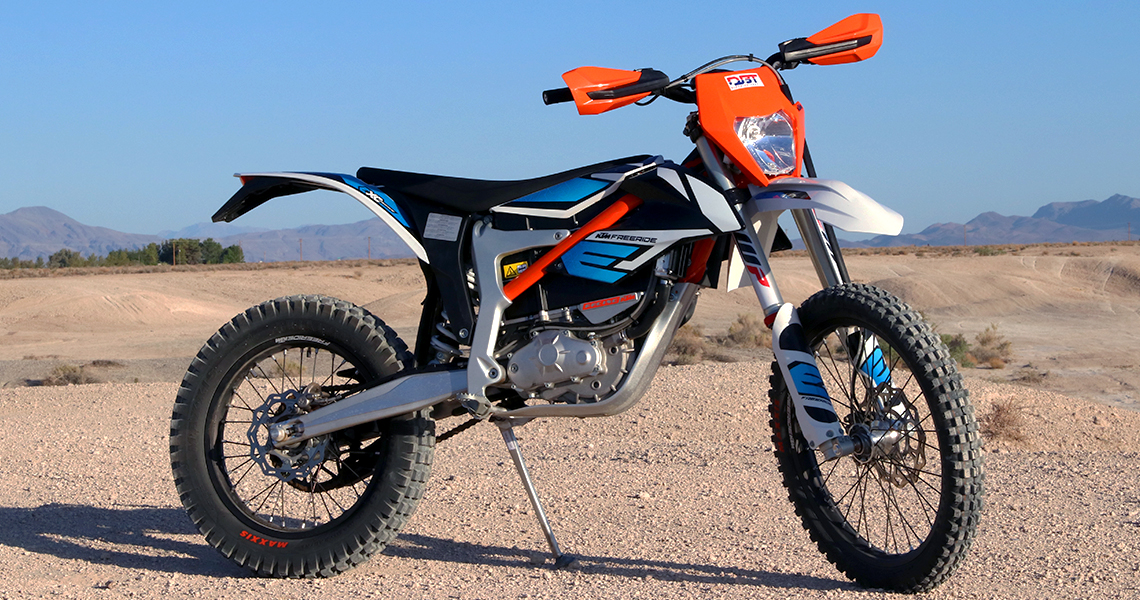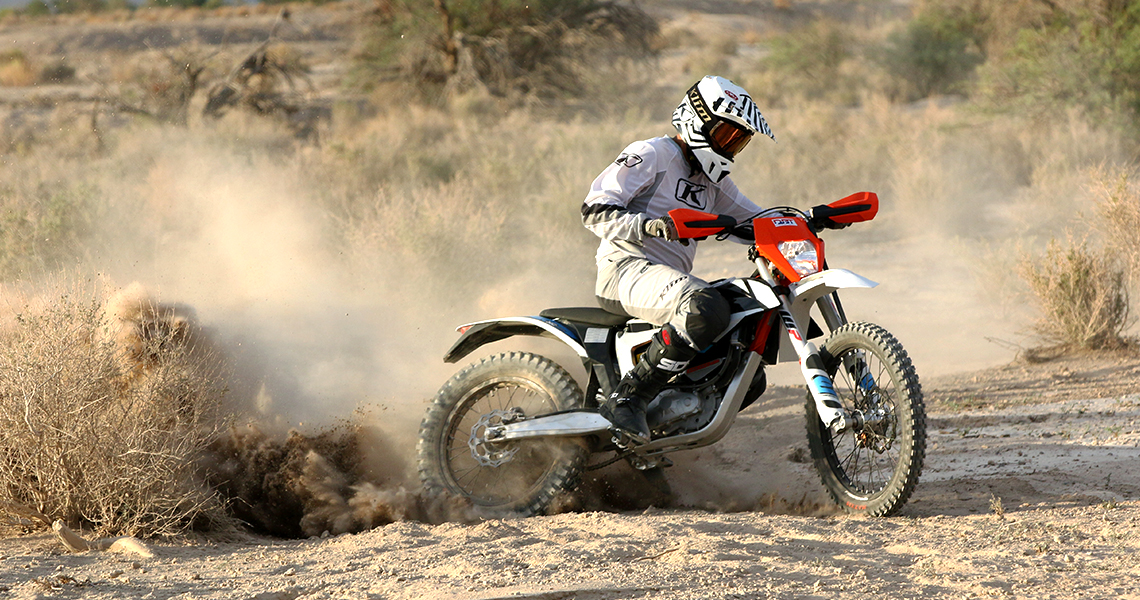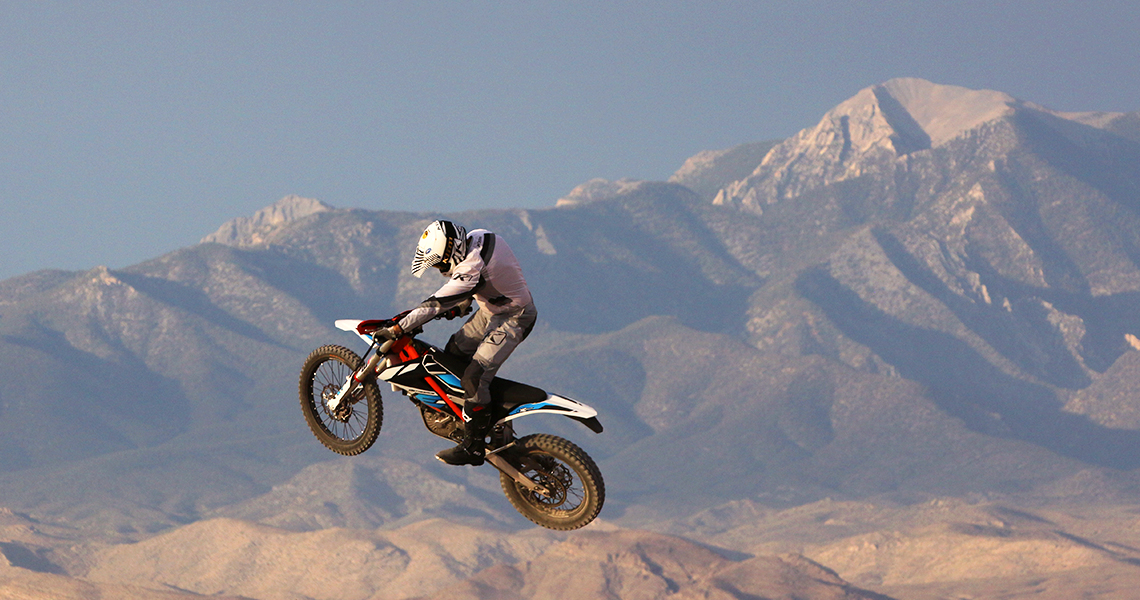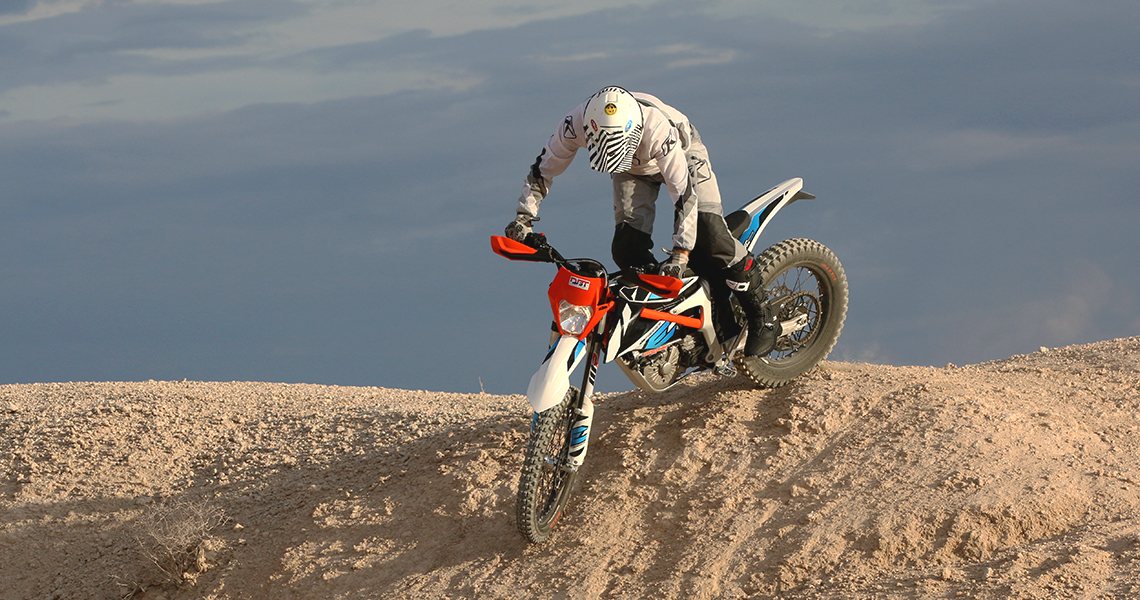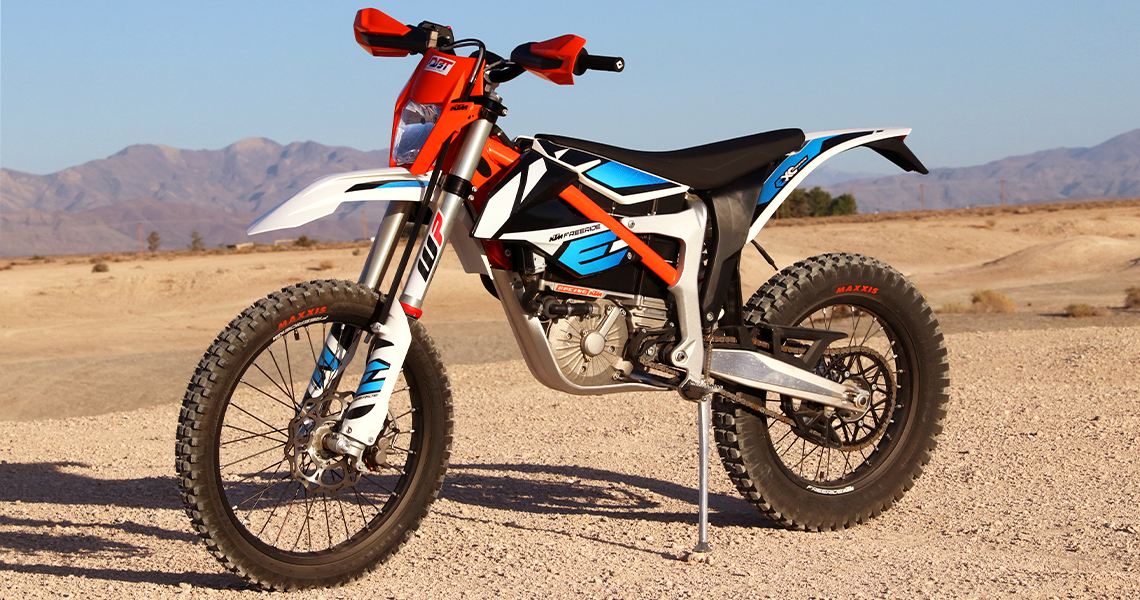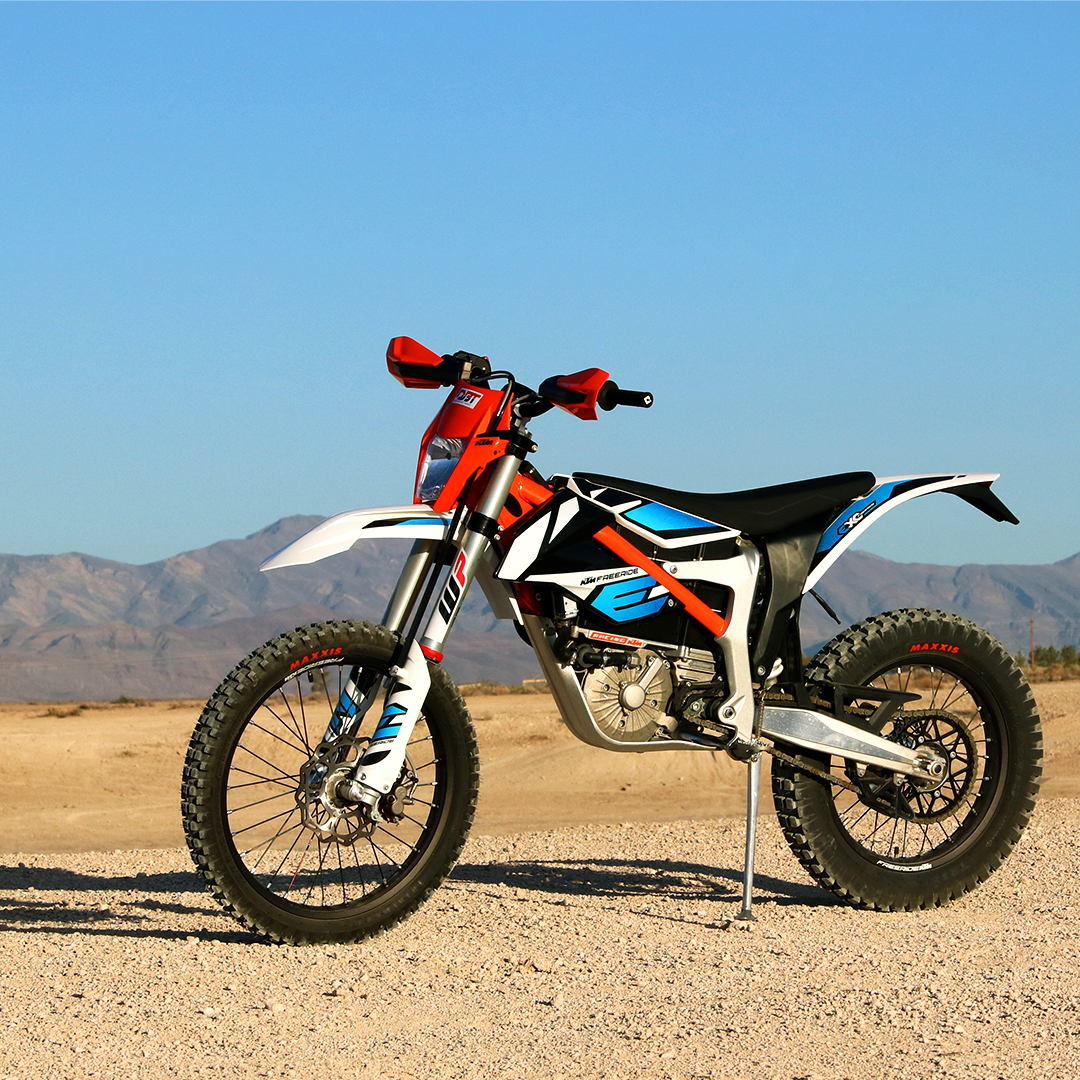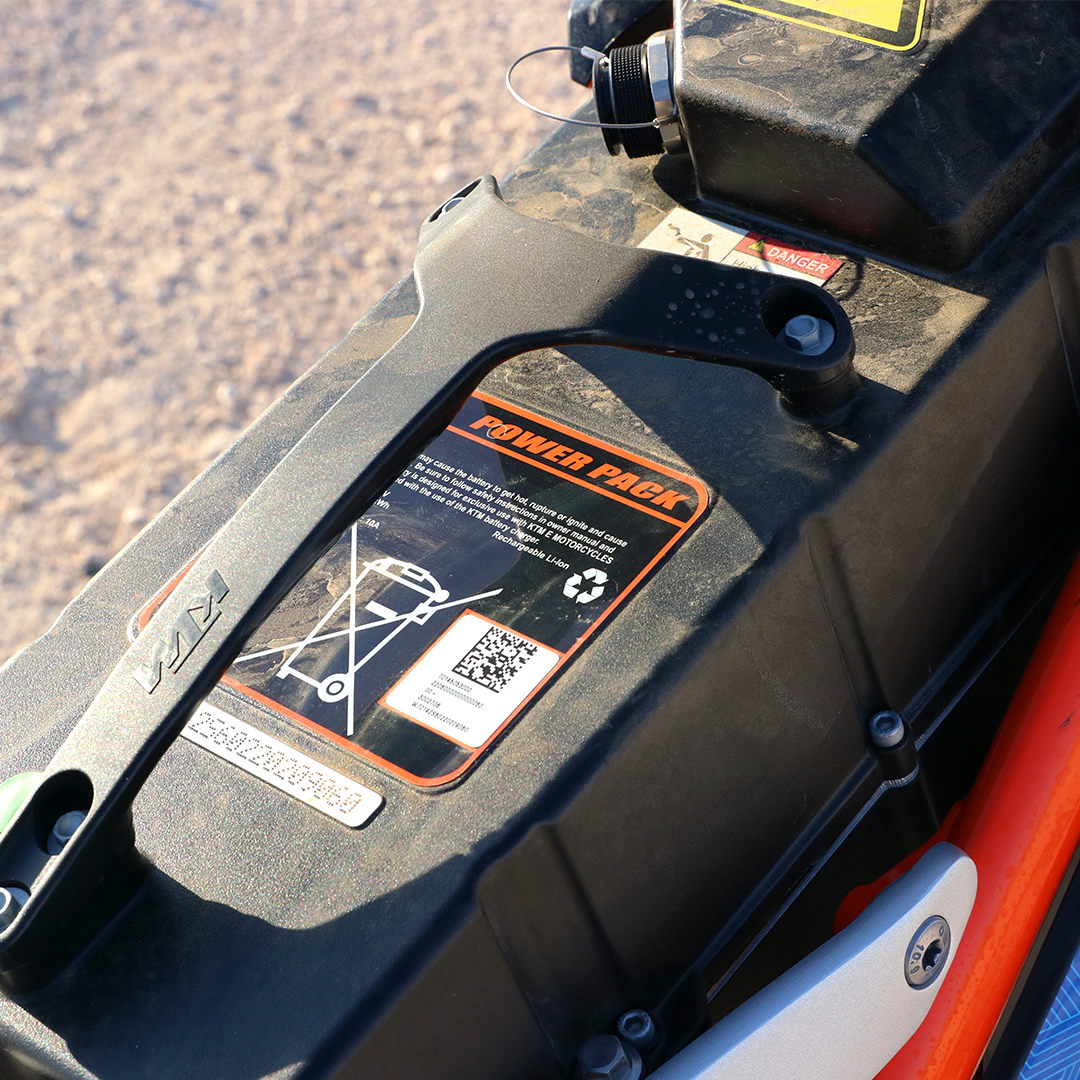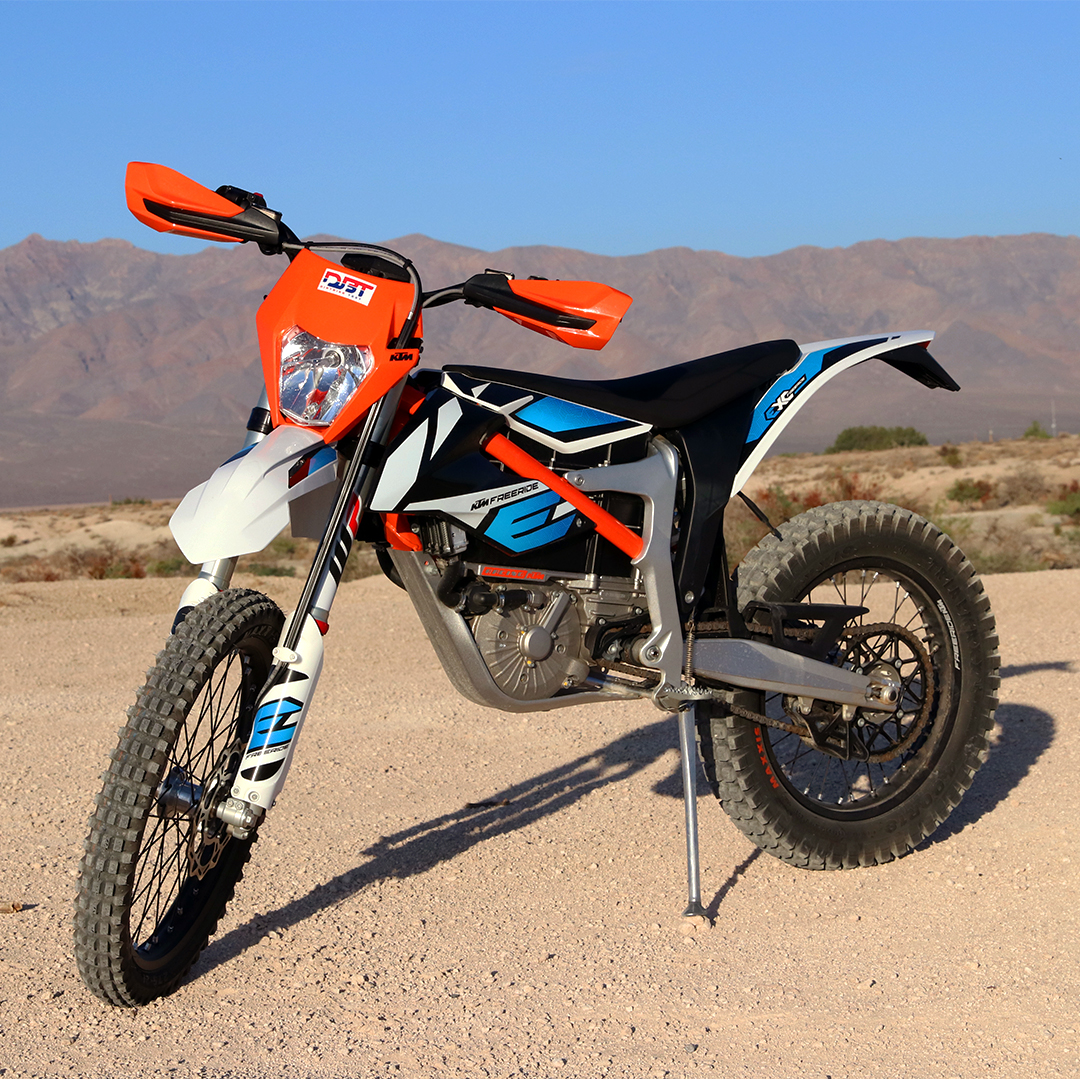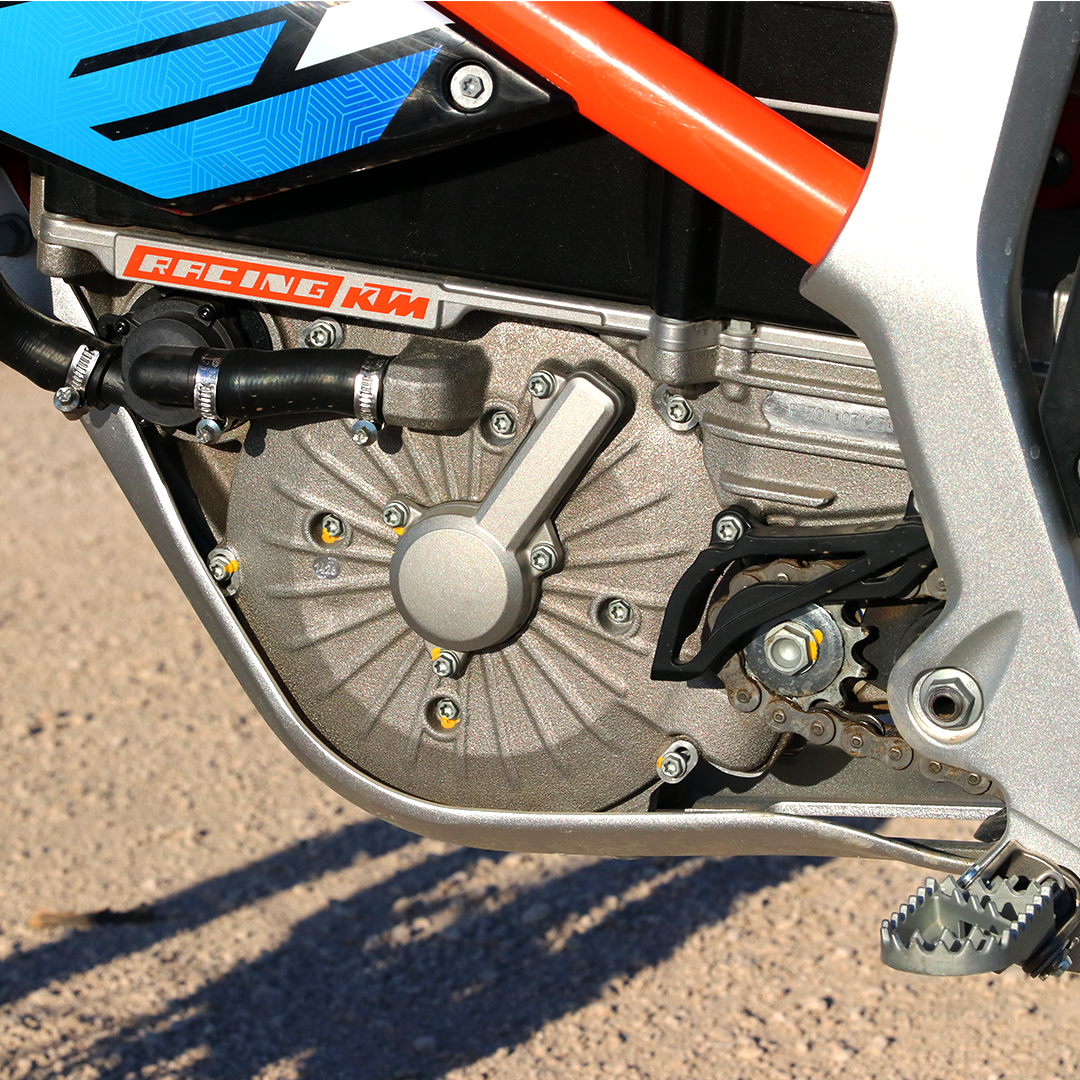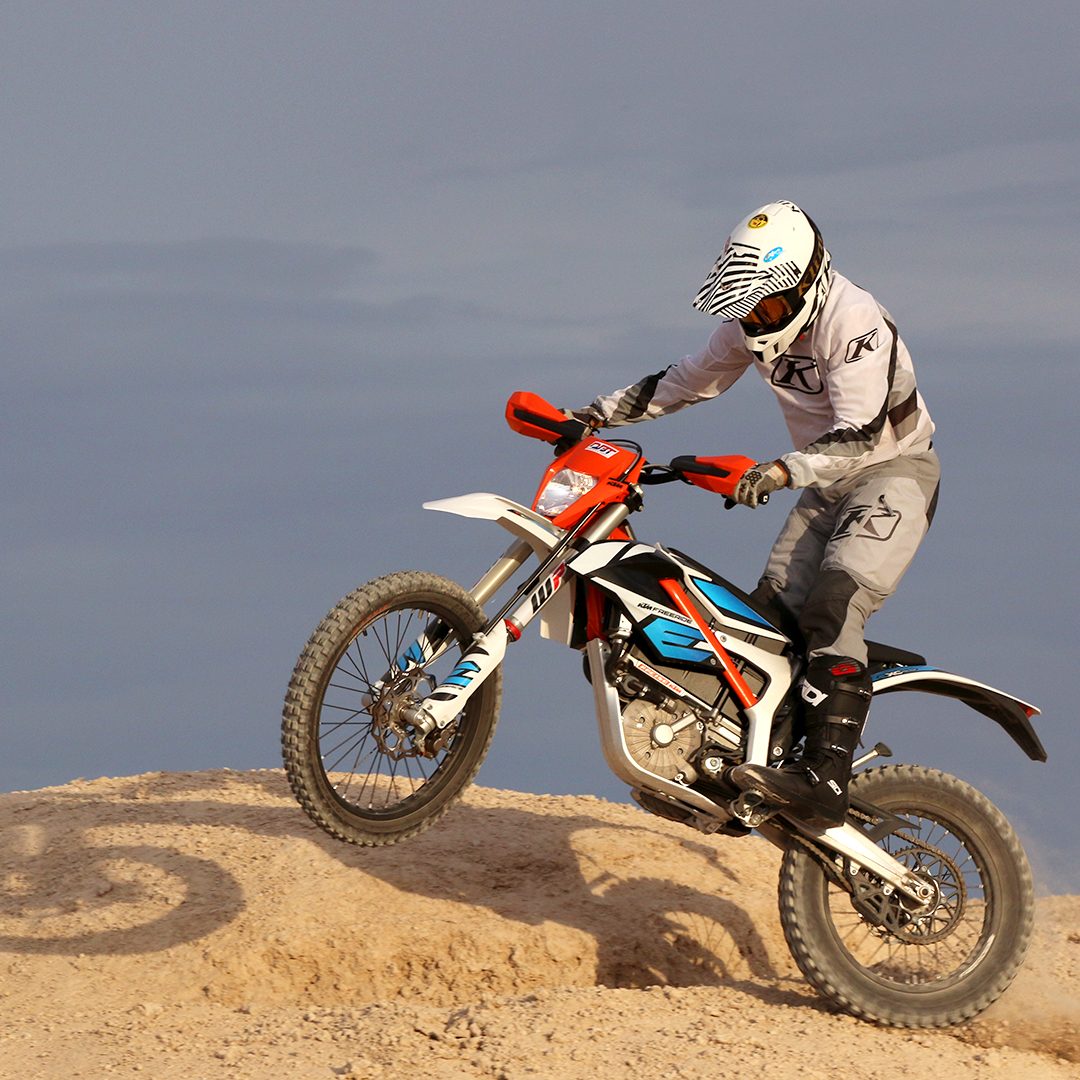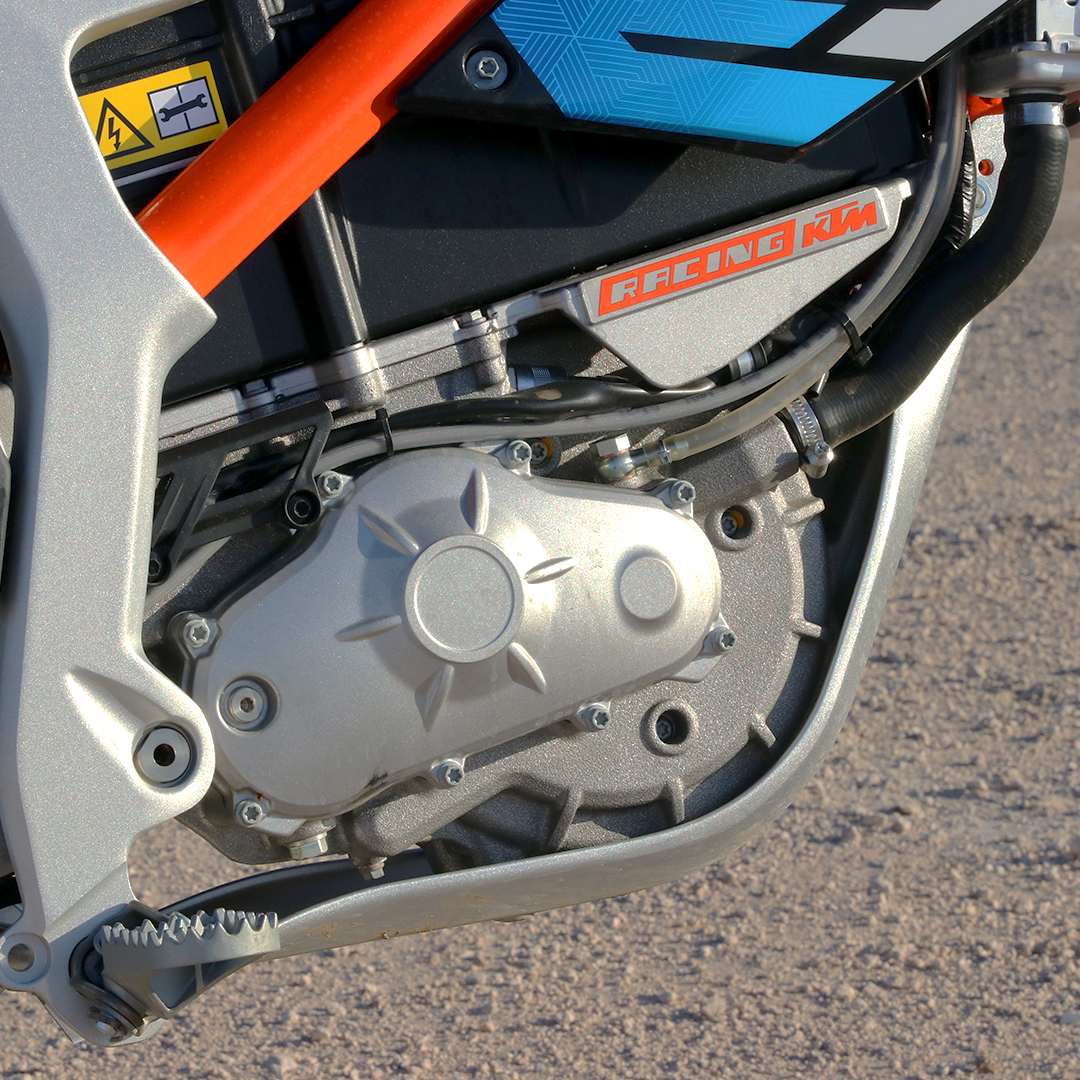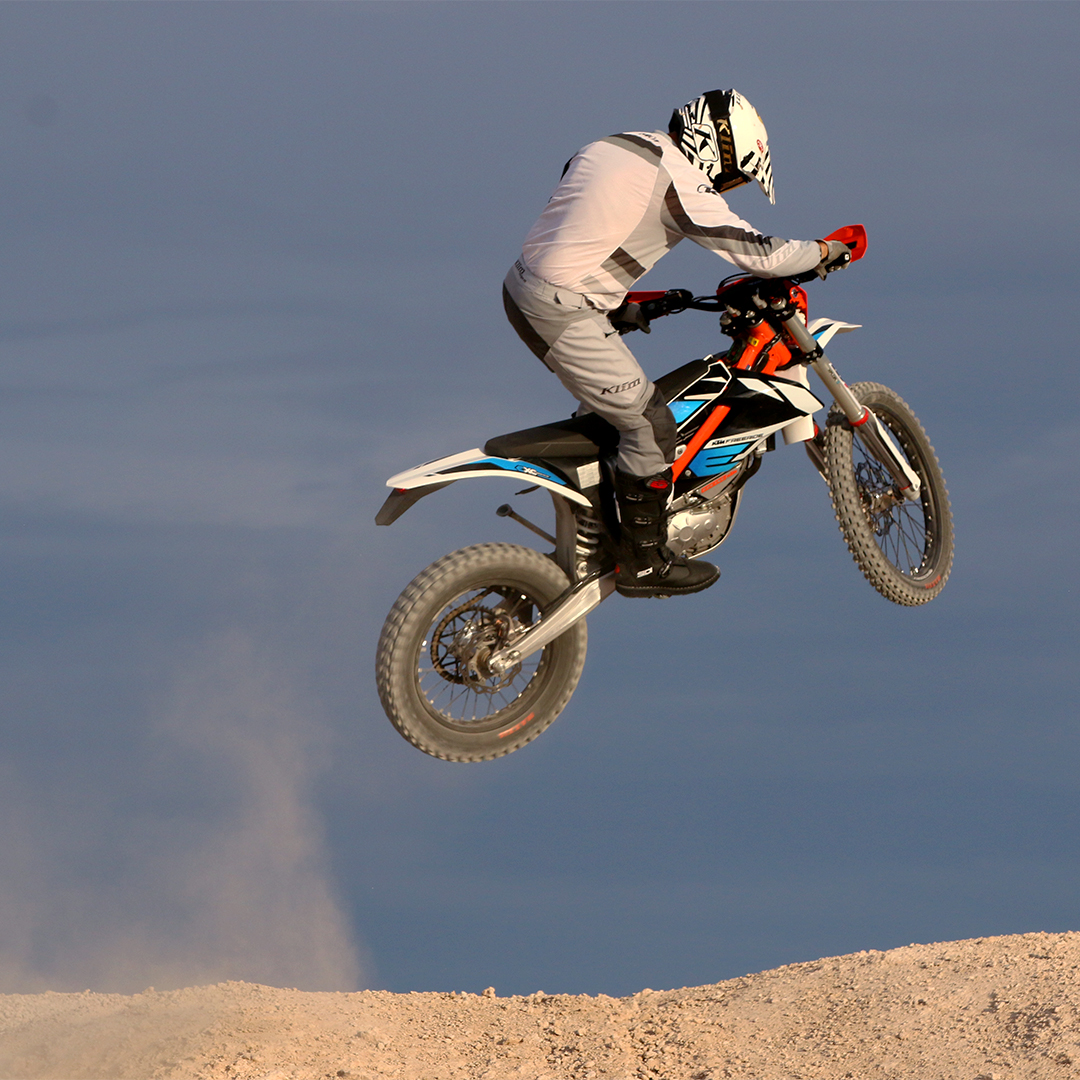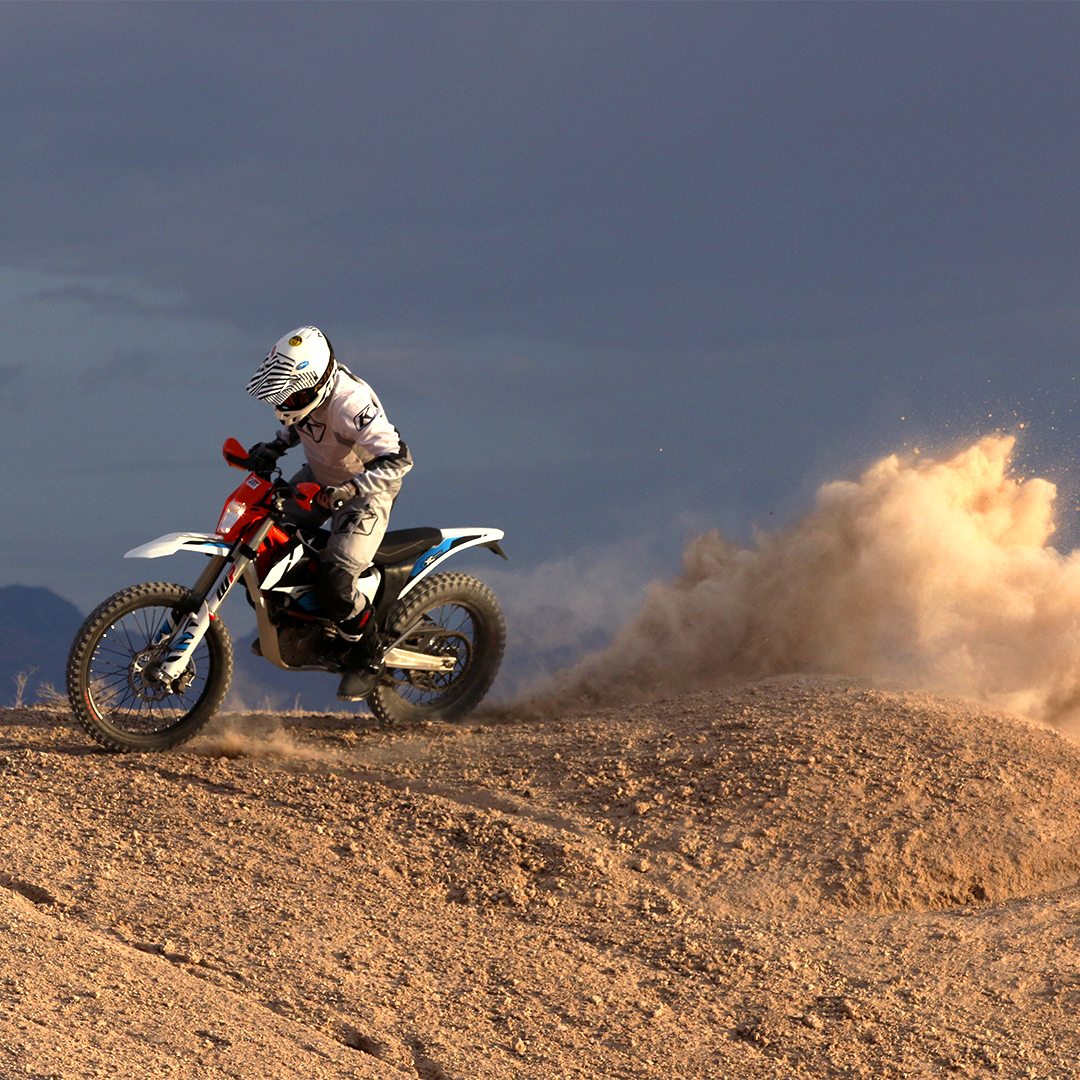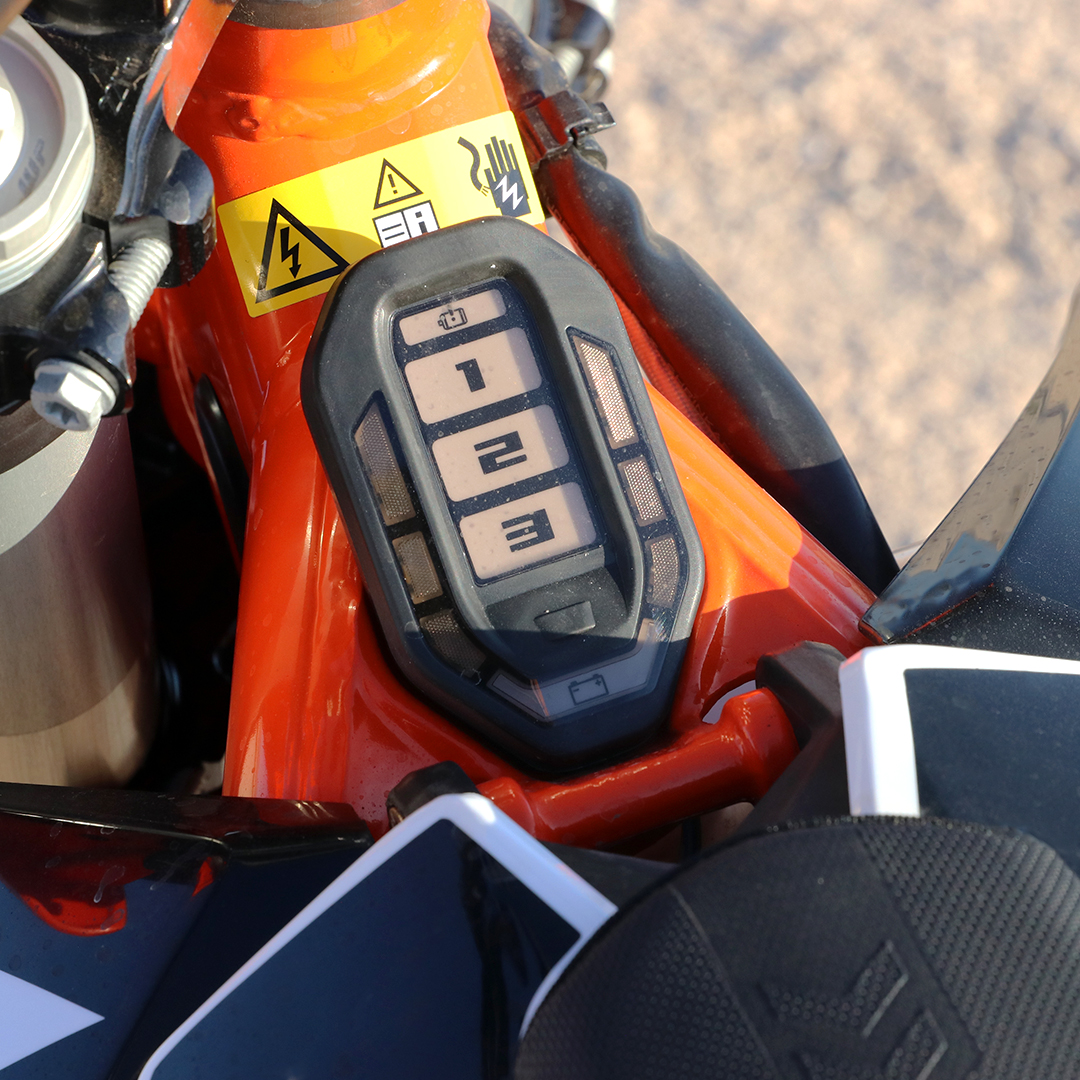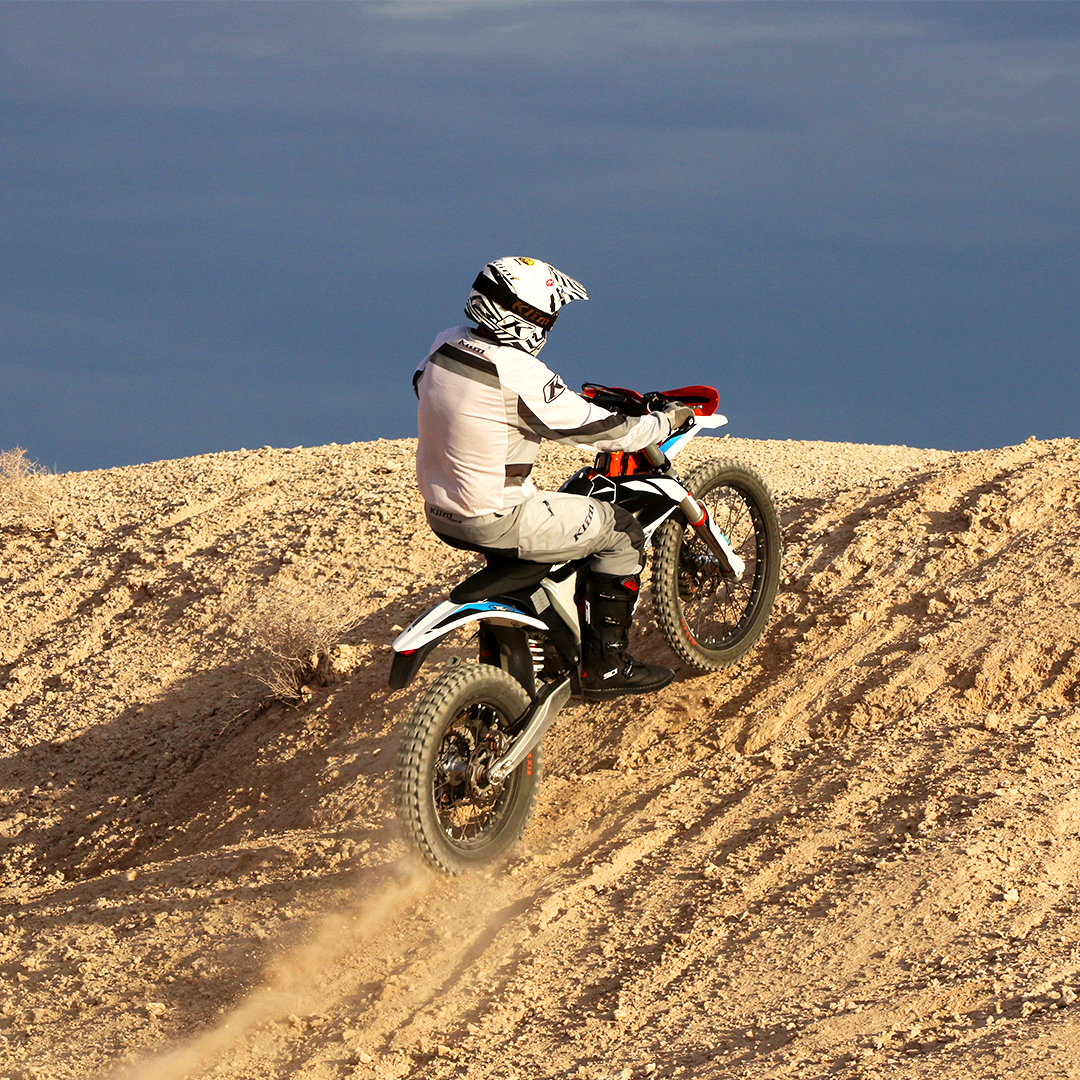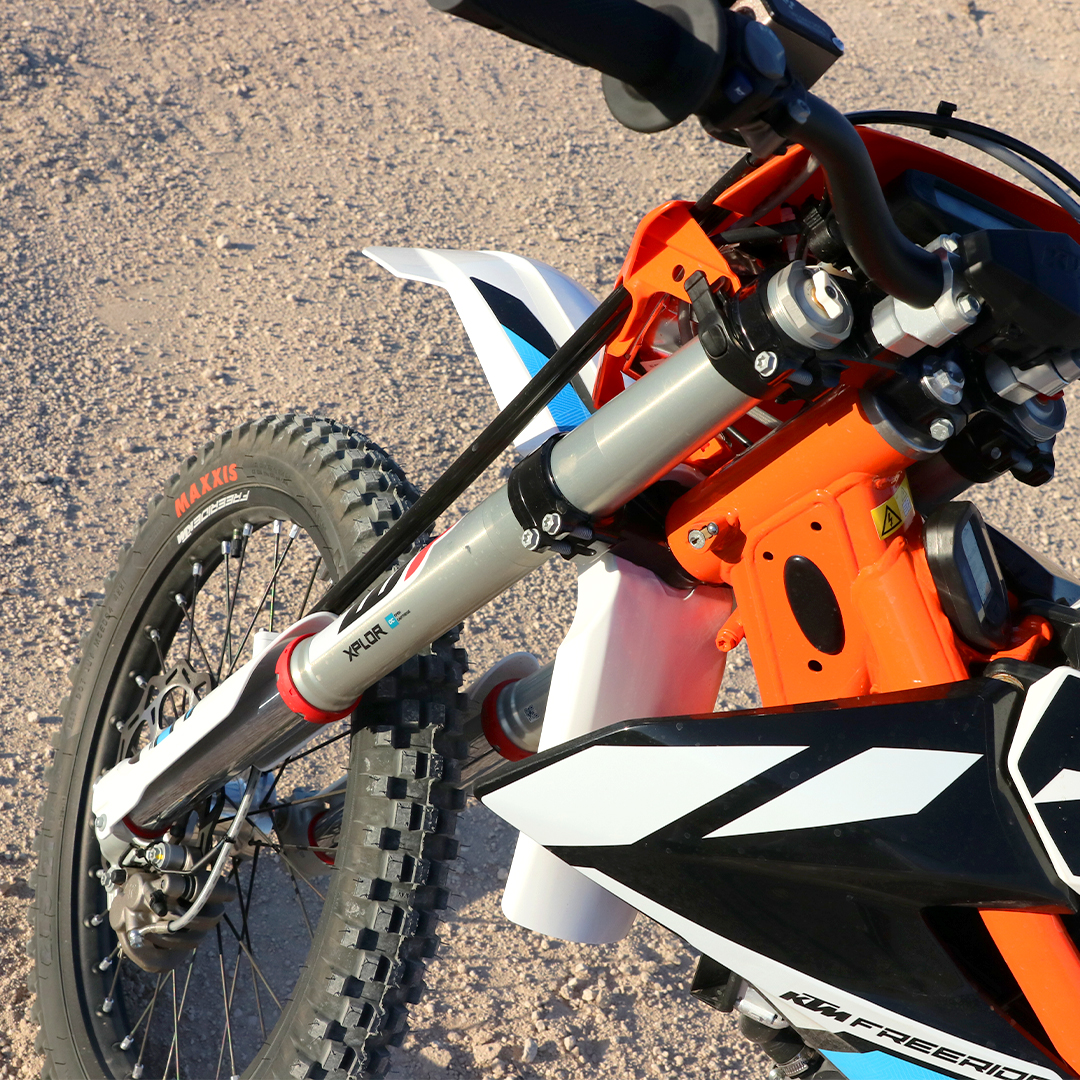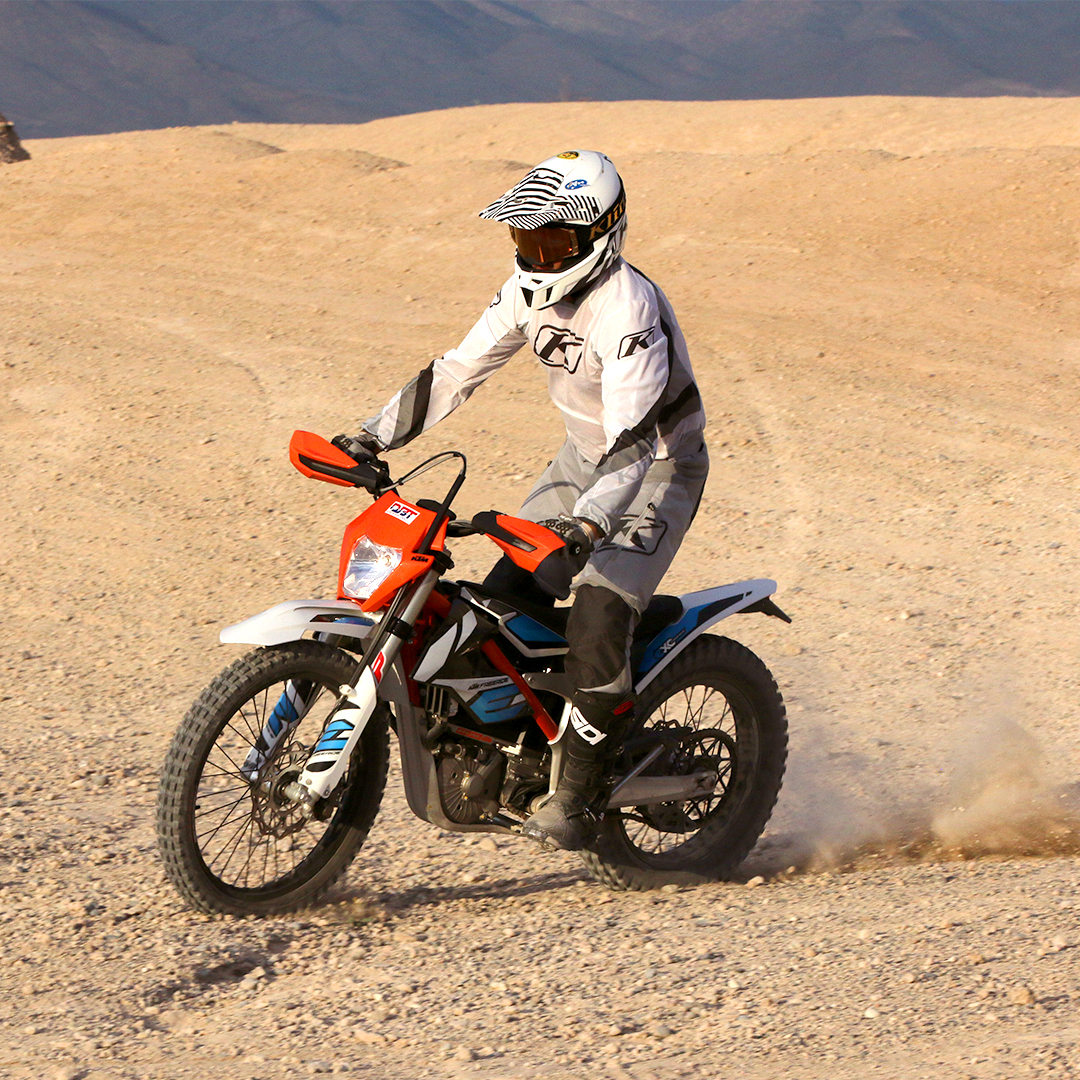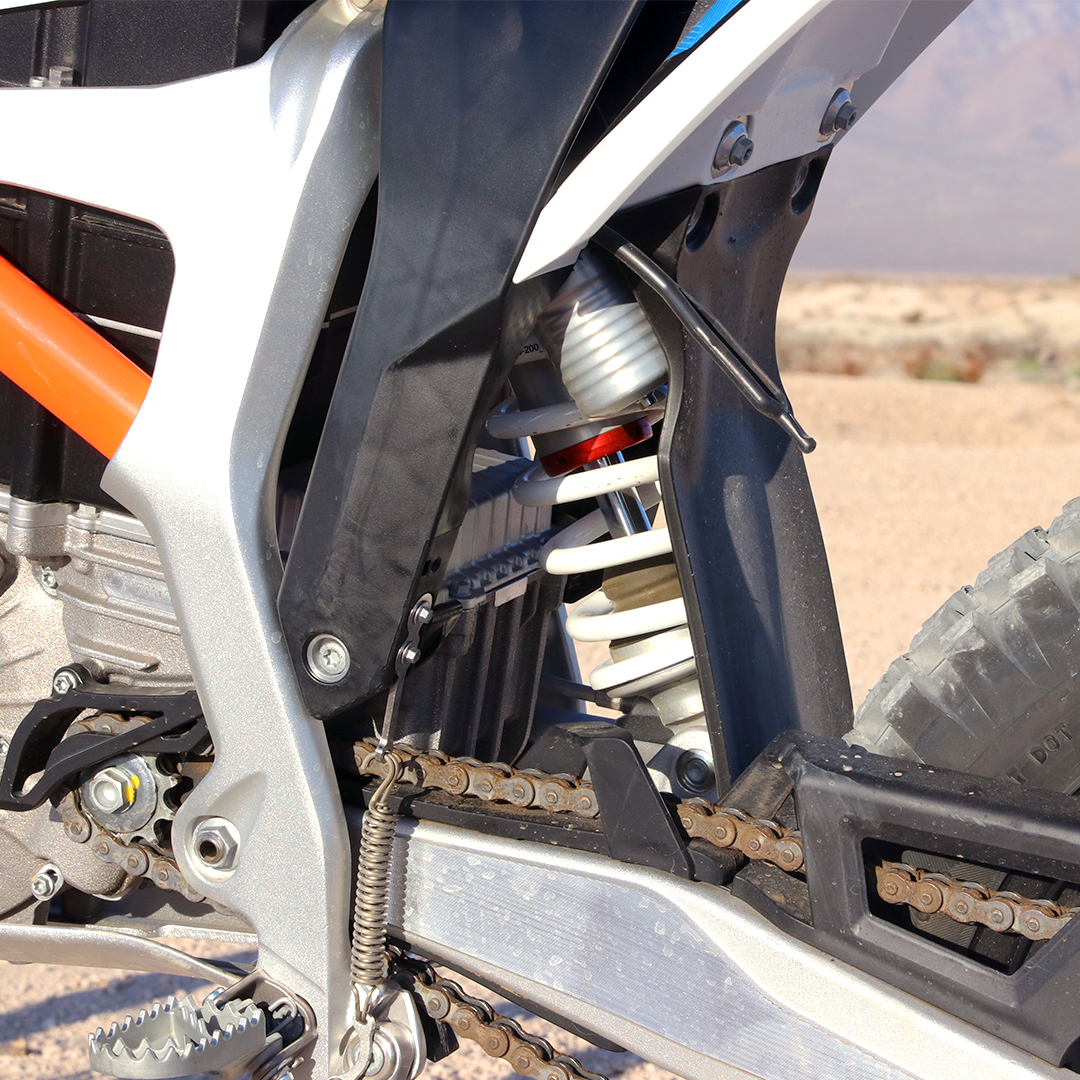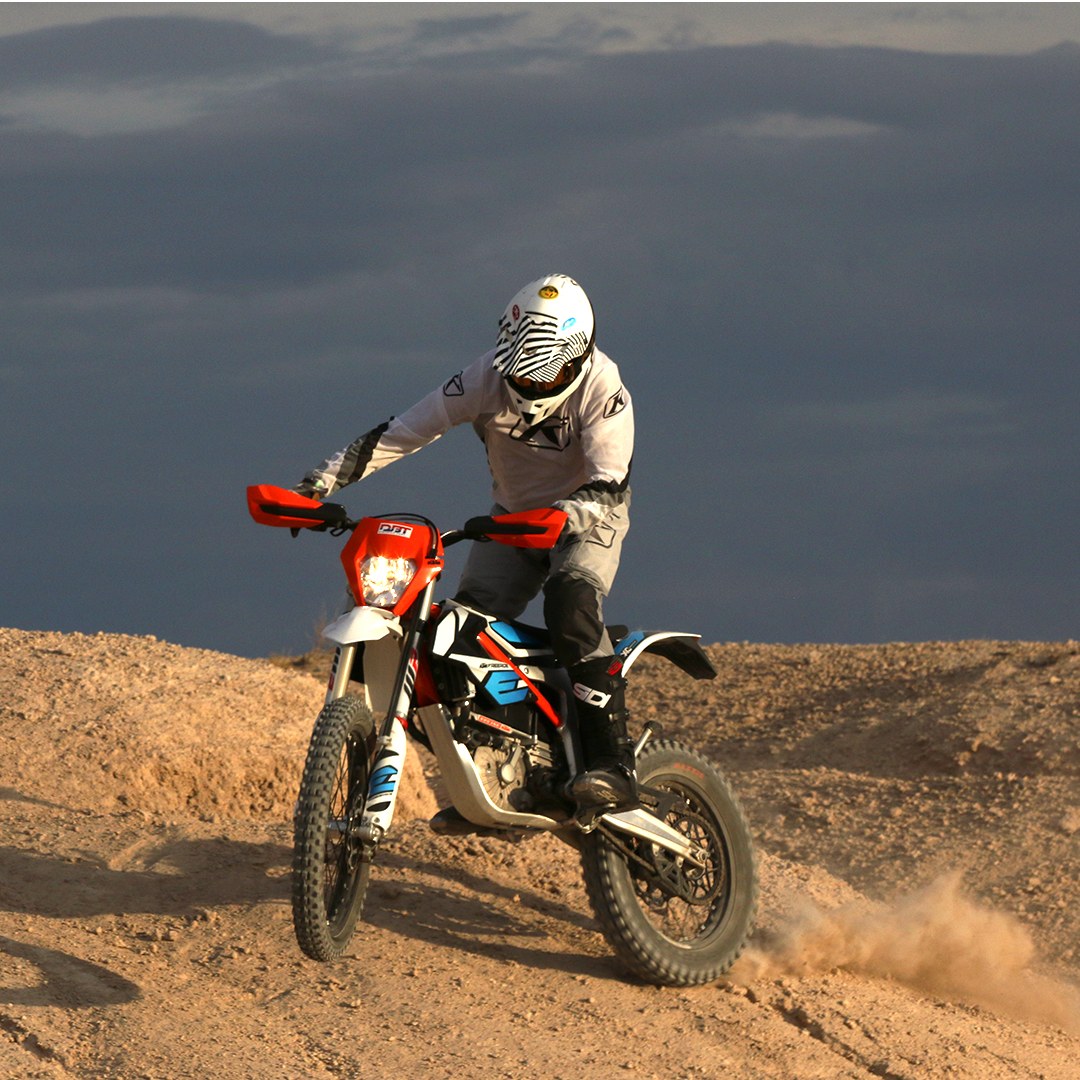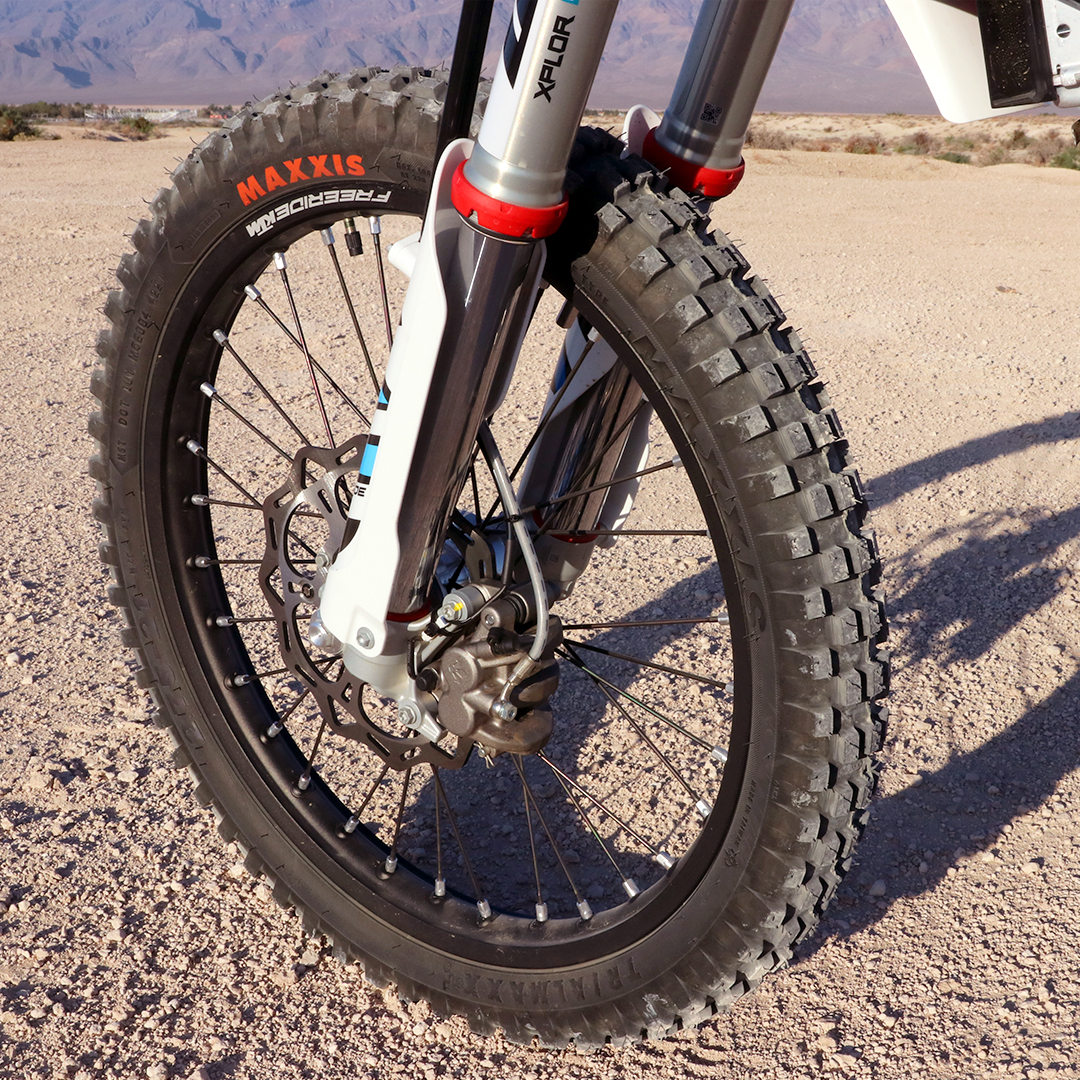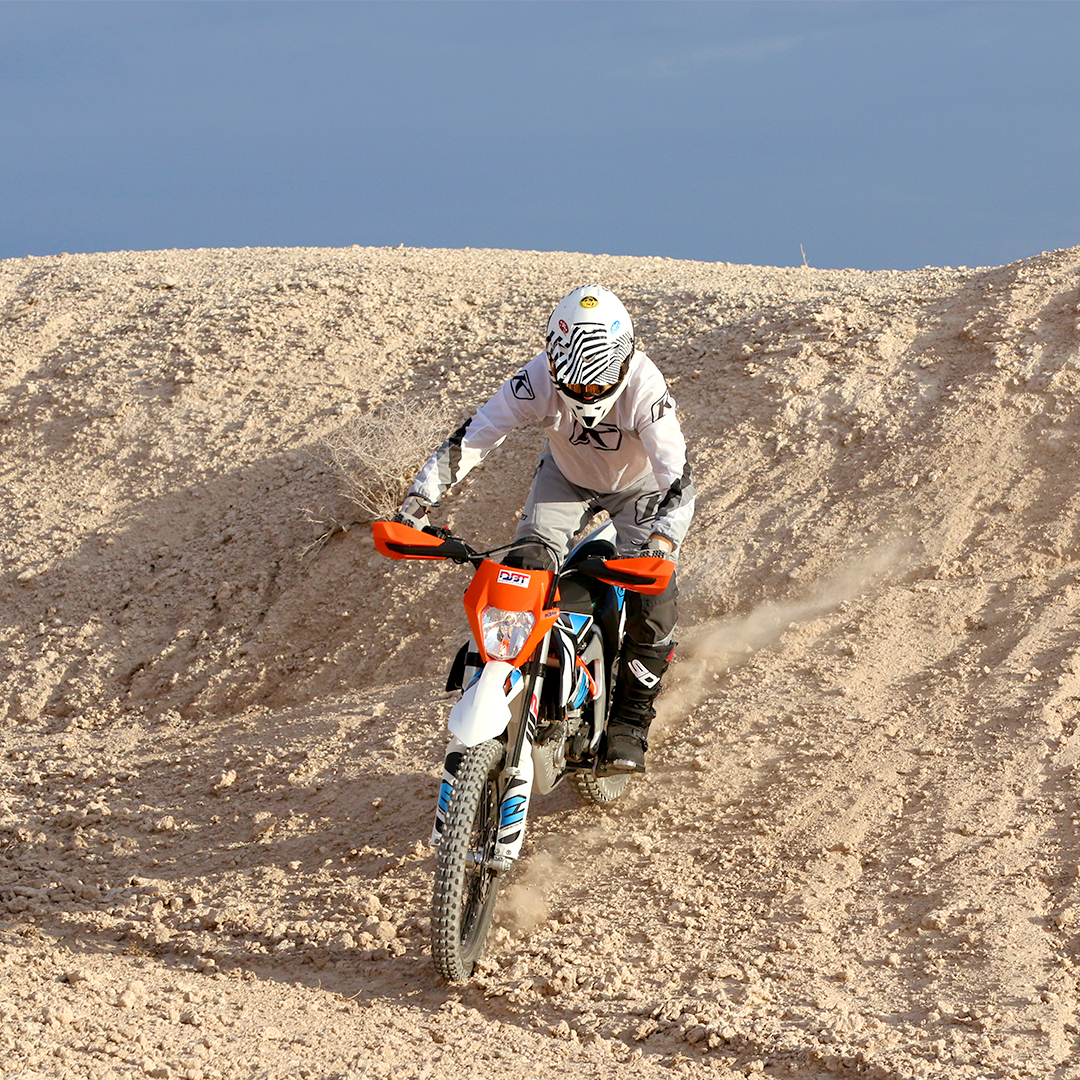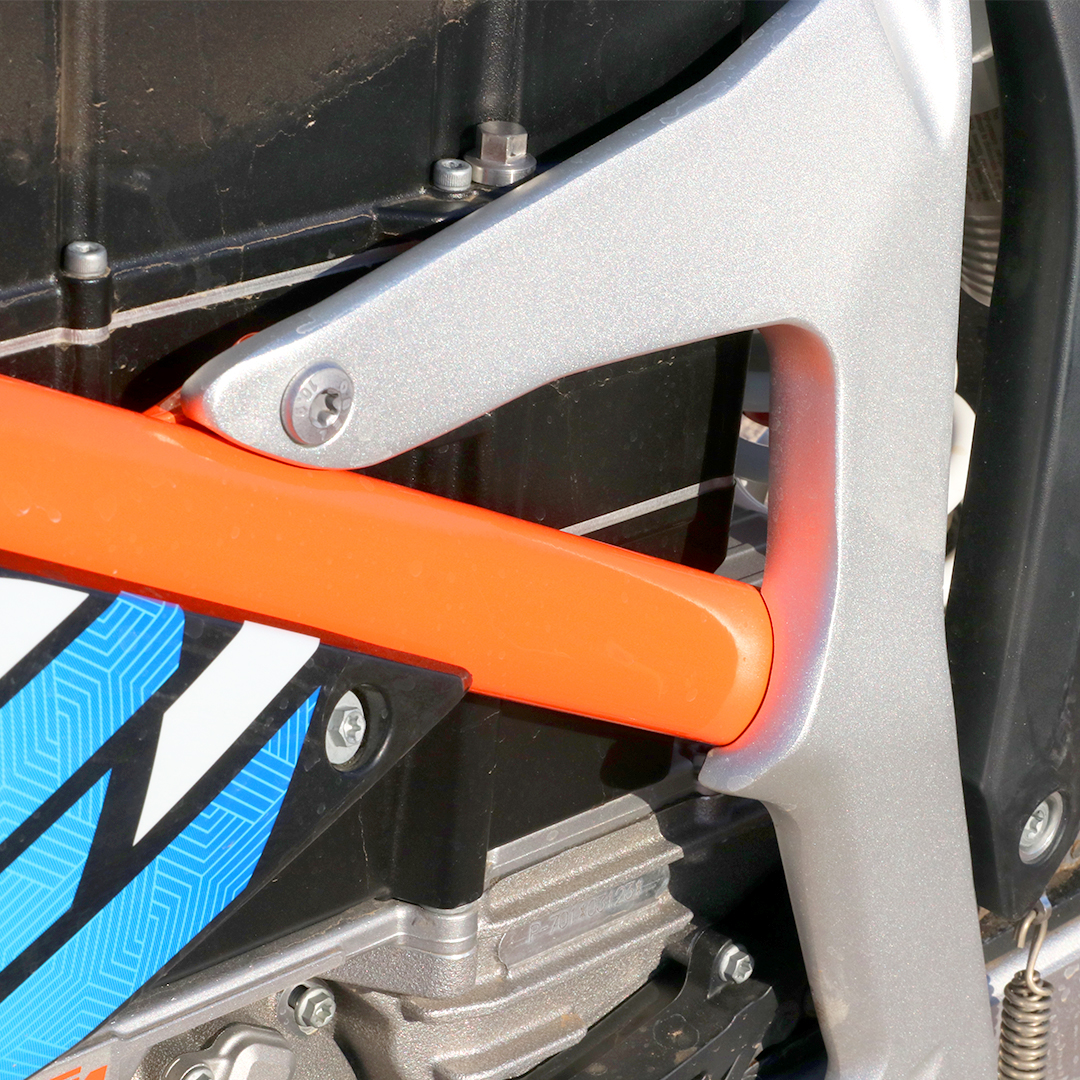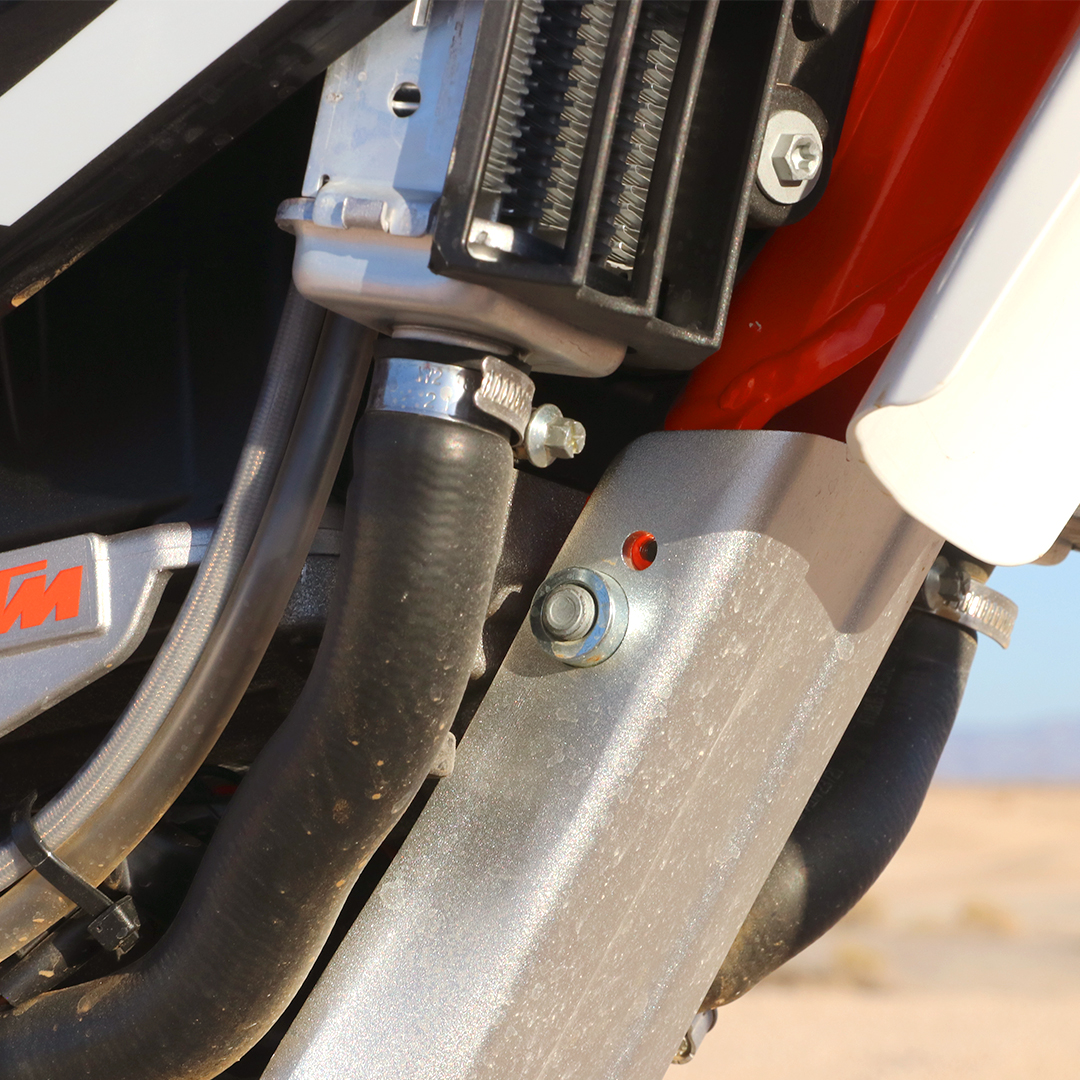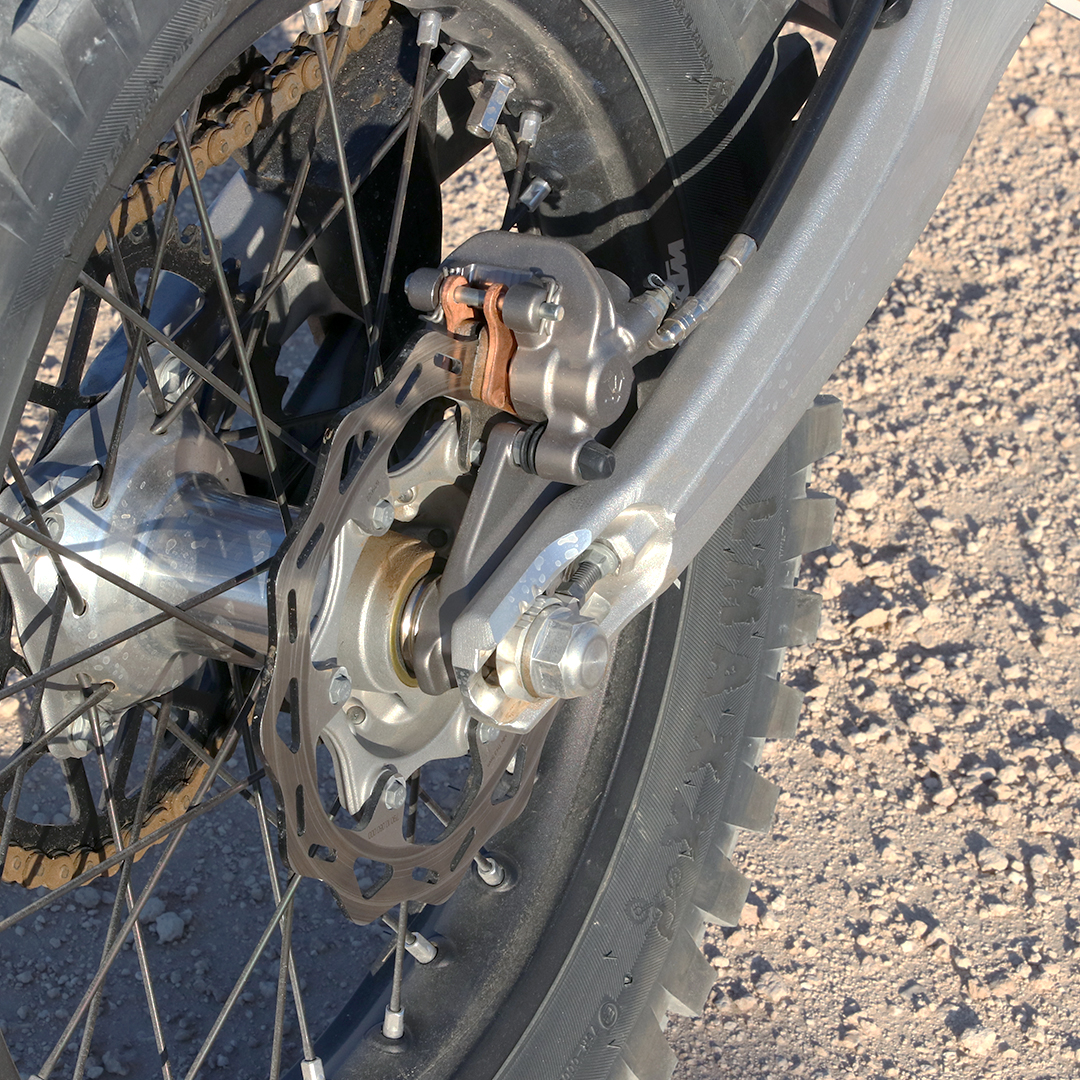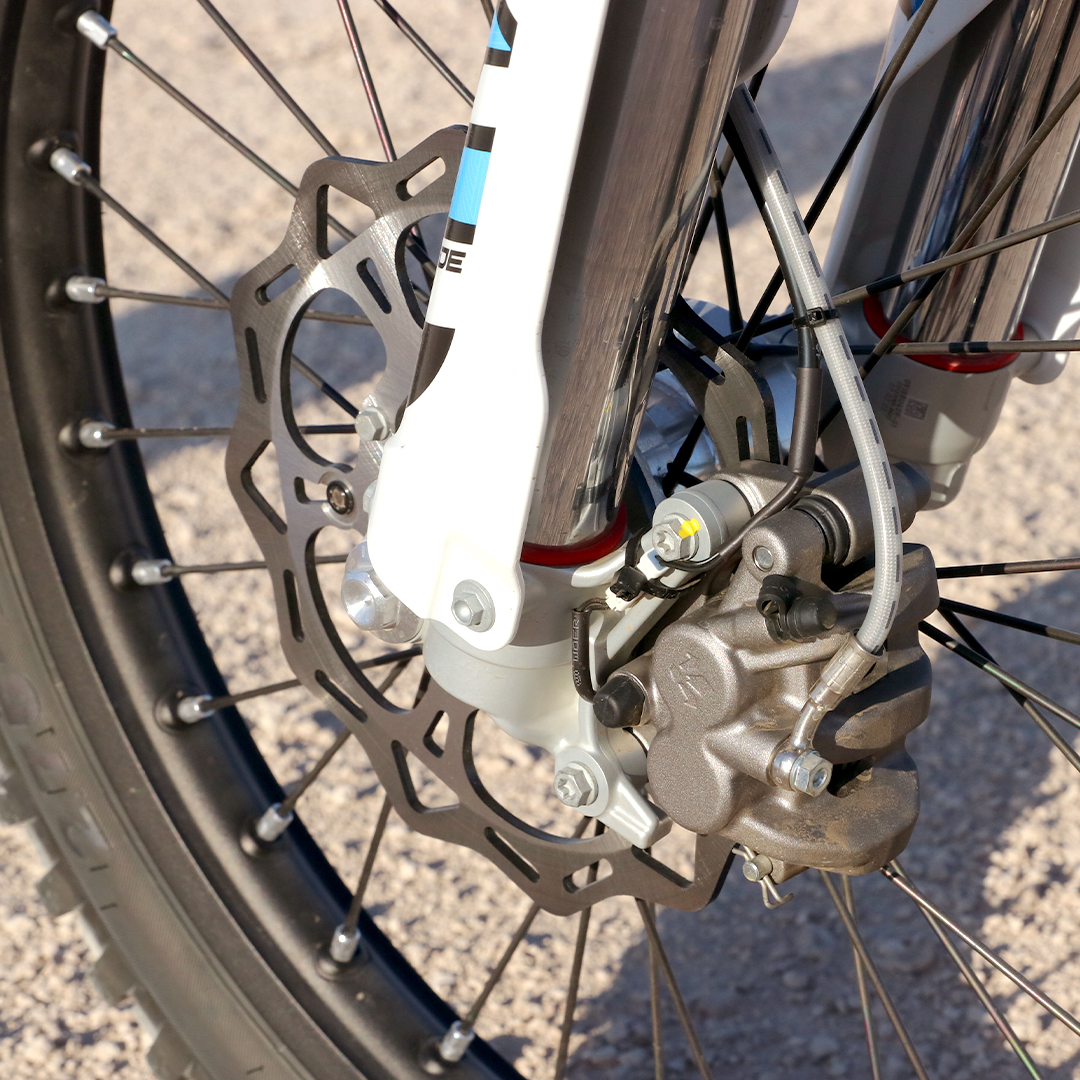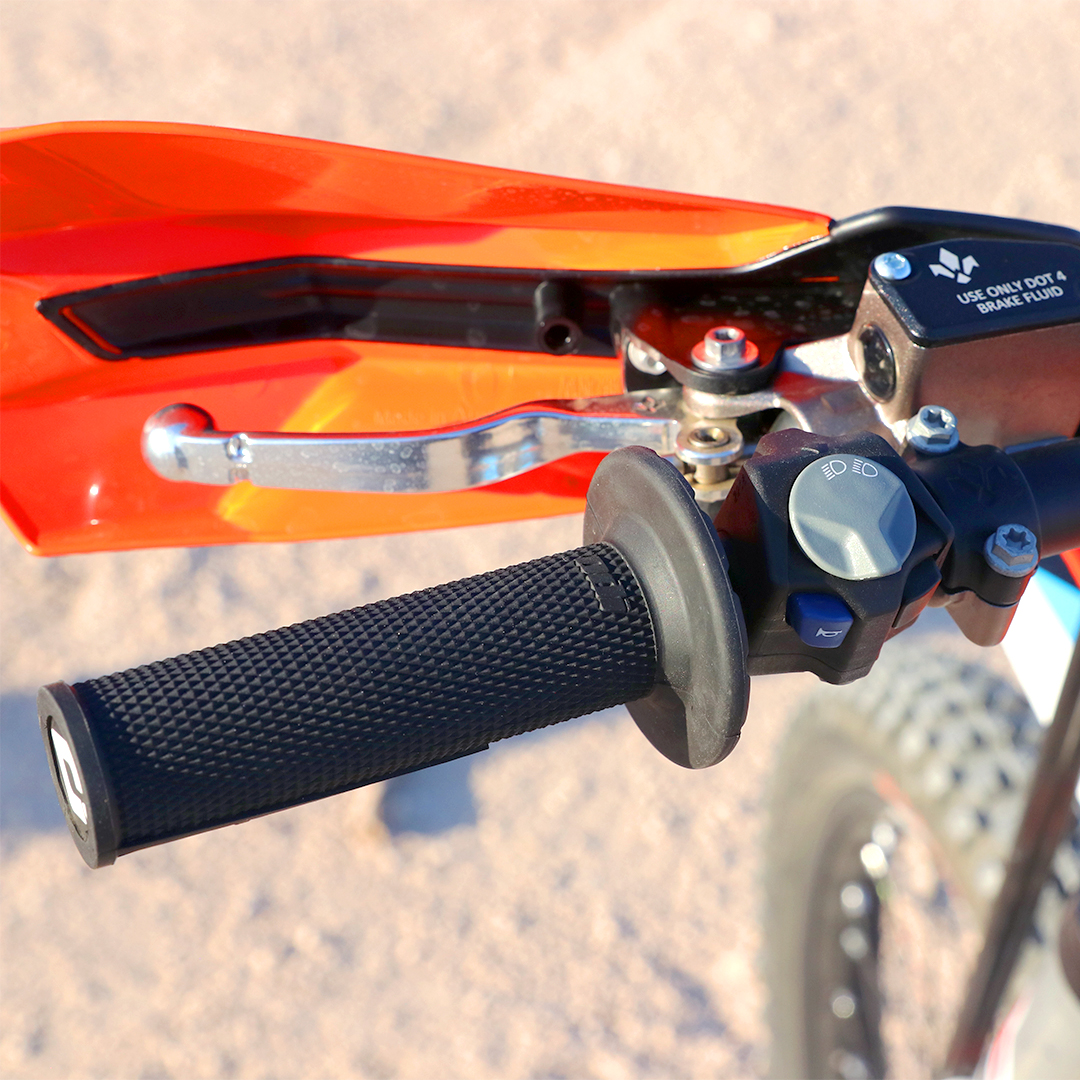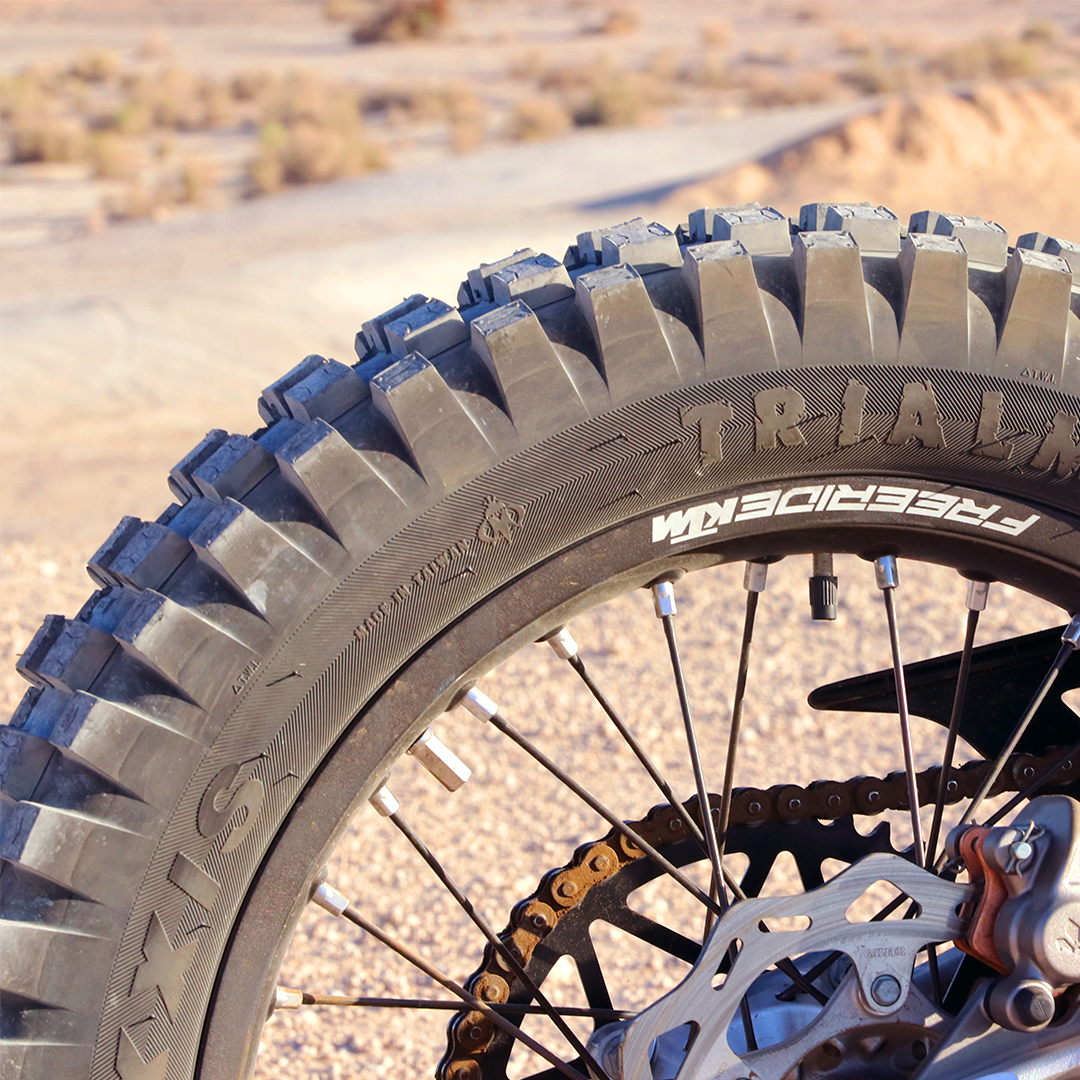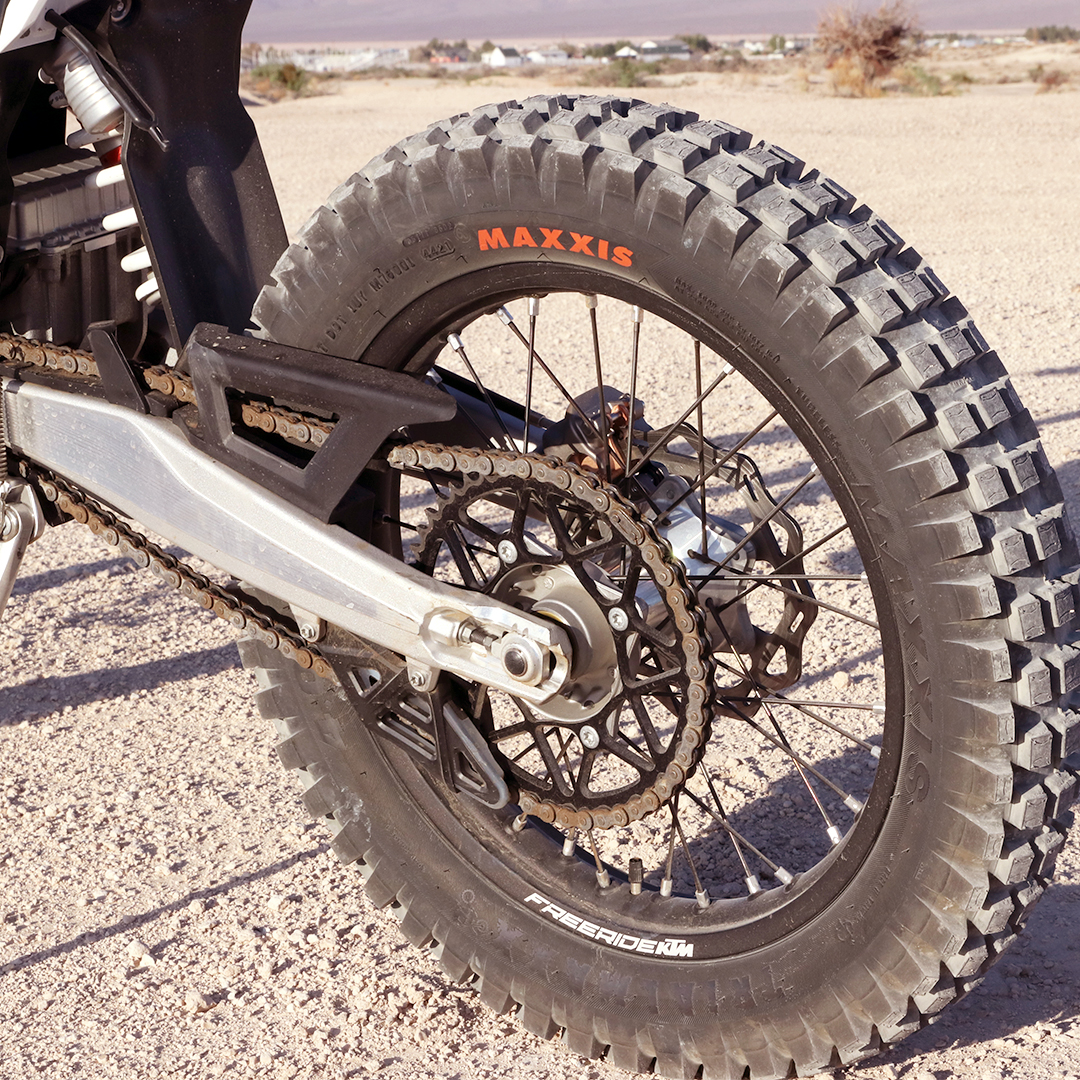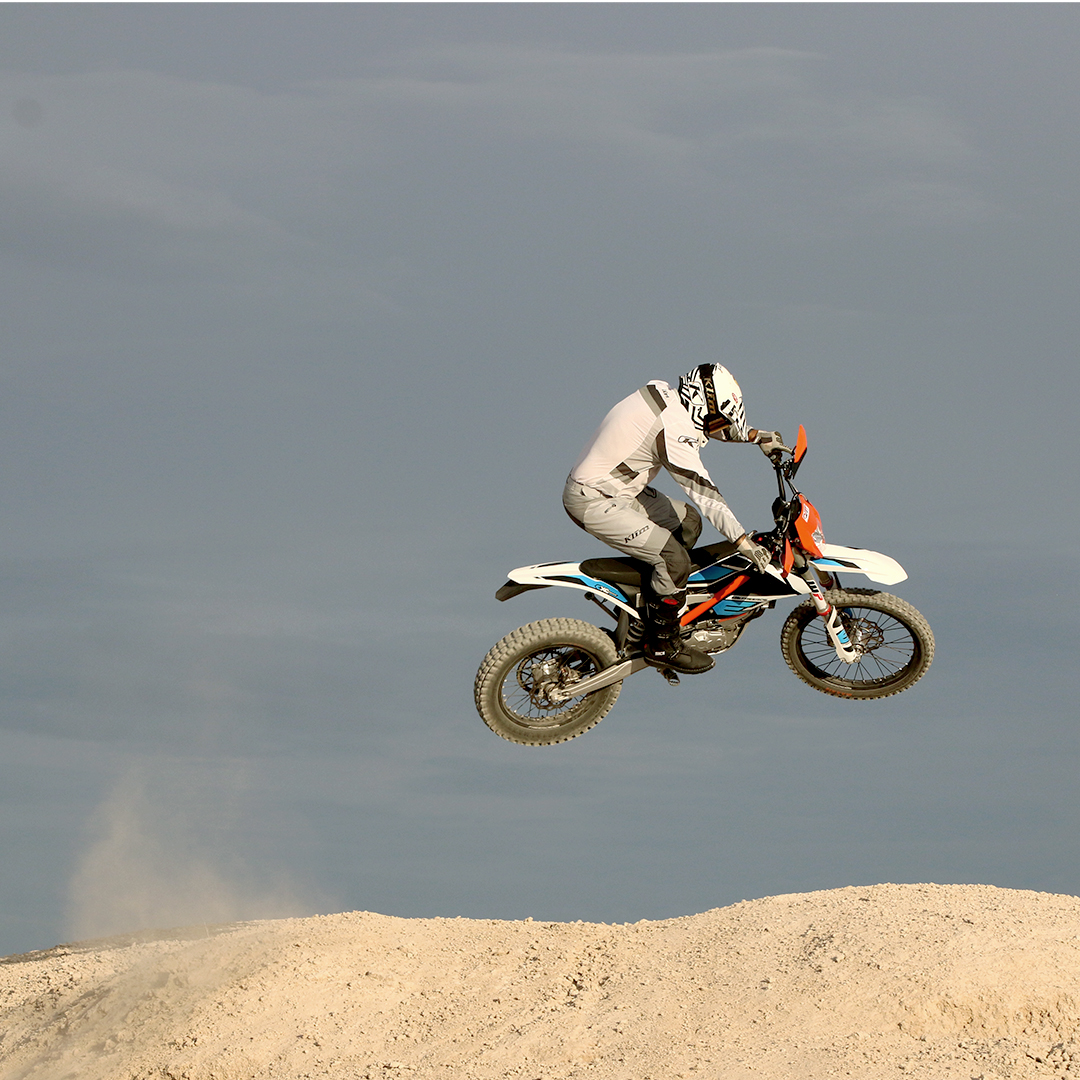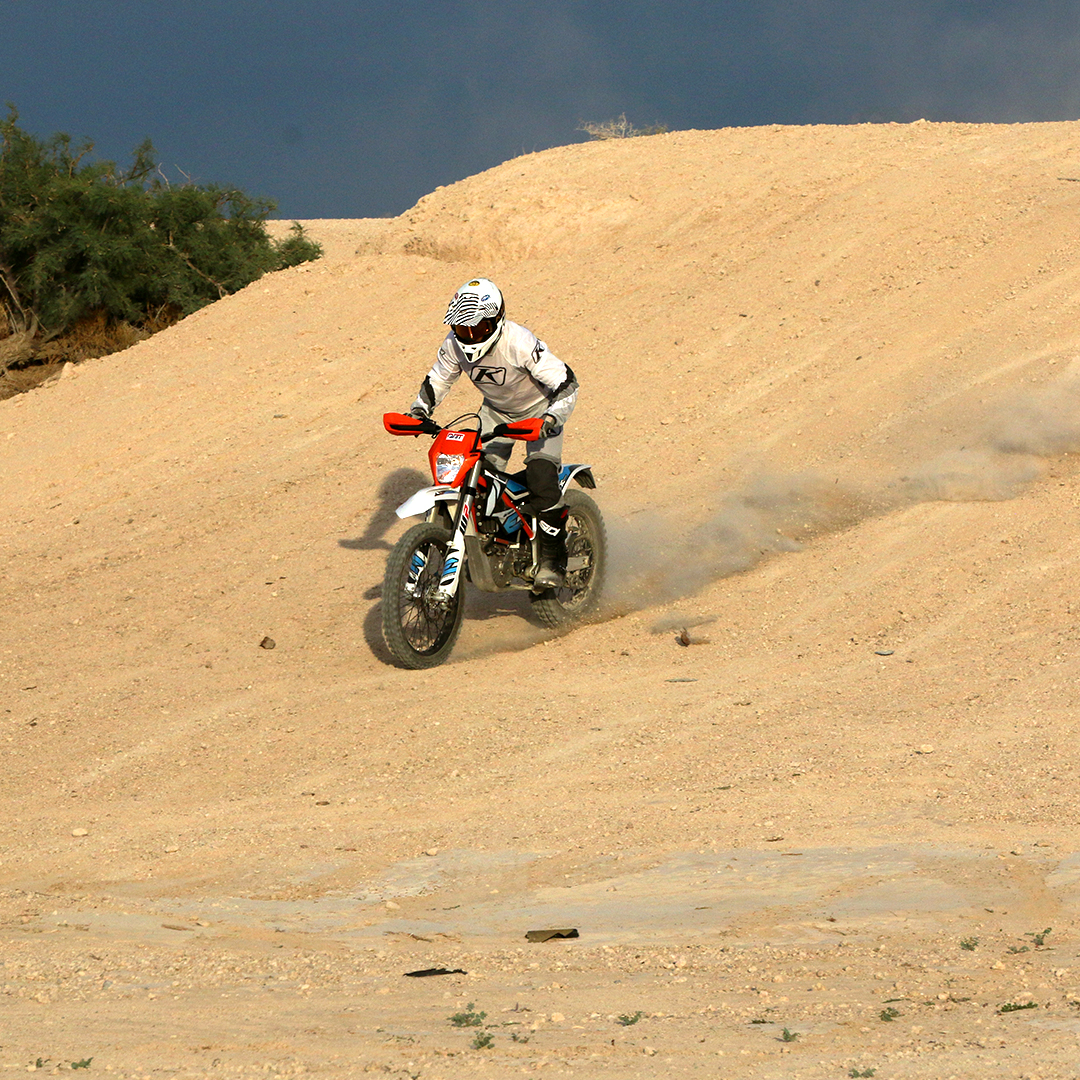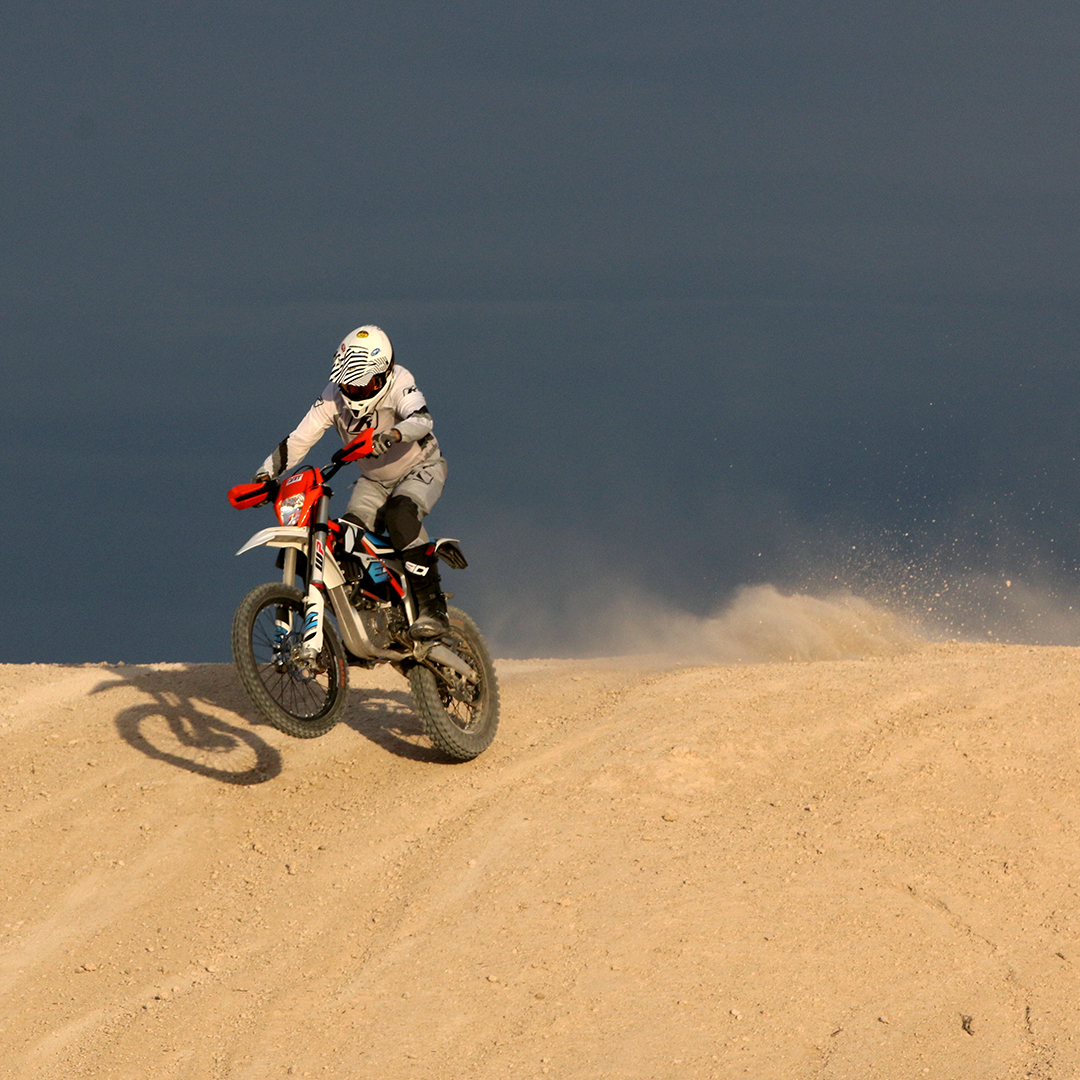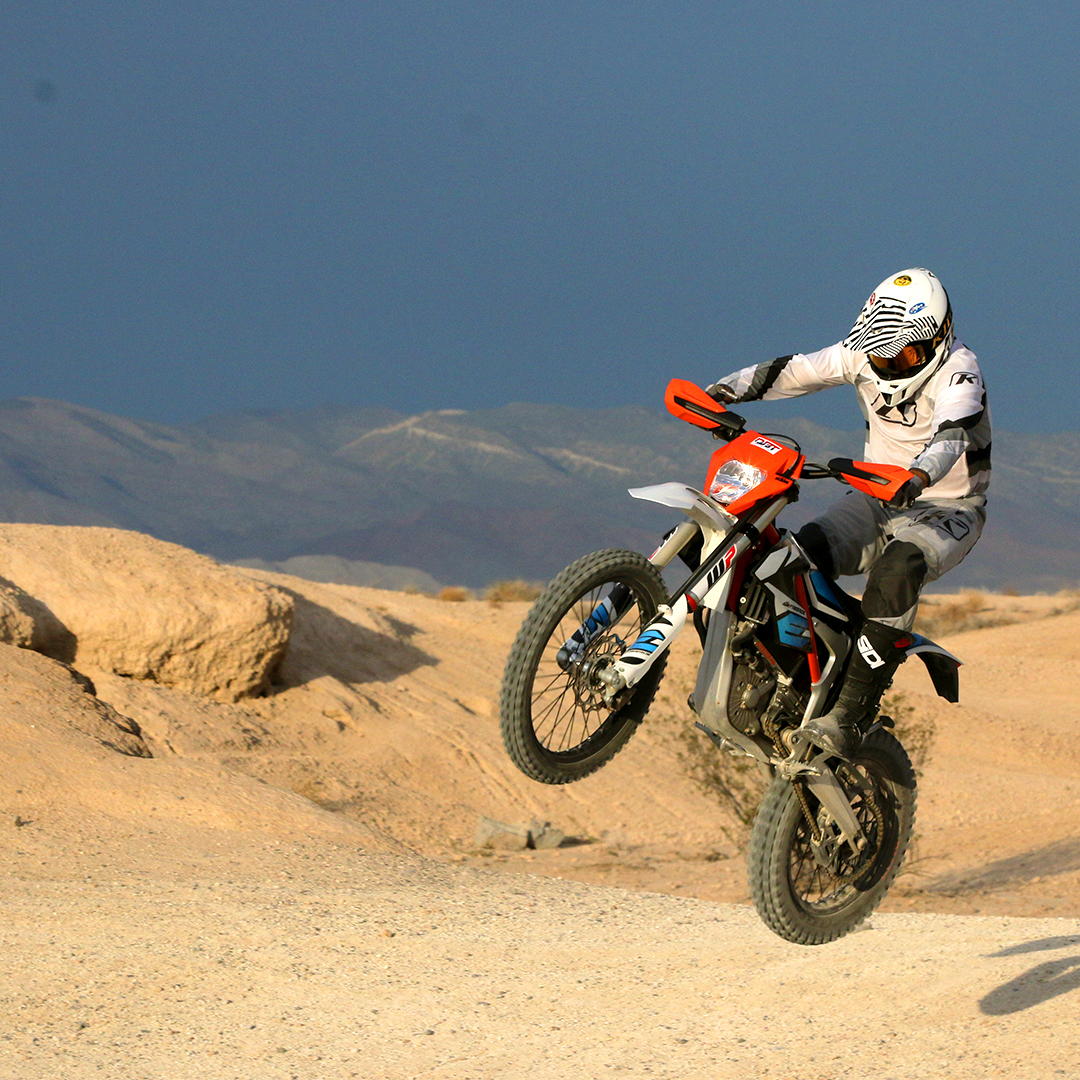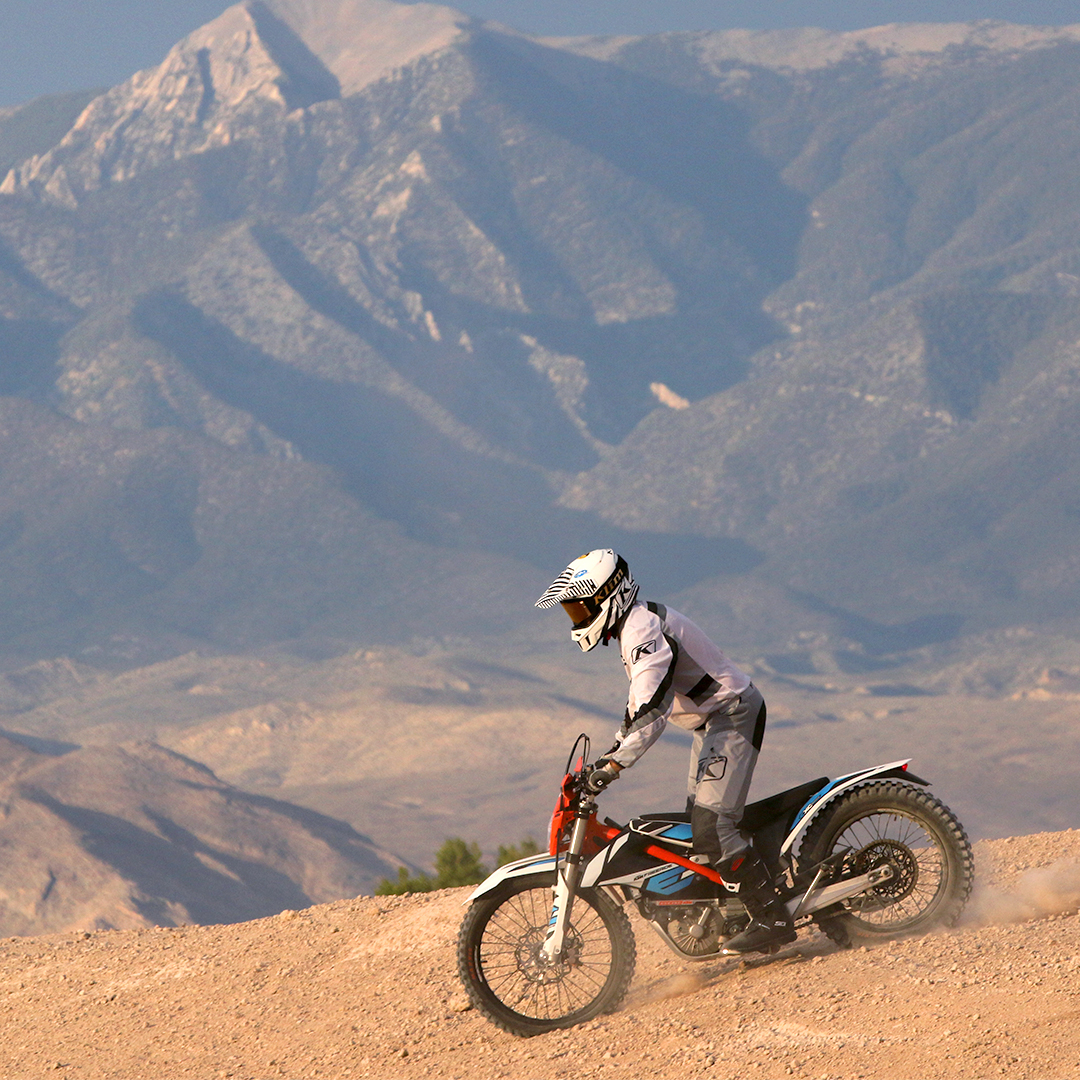2023 KTM Freeride E-XC
Is The Future Now?
MSRP: 11,299
- Two different bikes with the three power modes
- Quality components
- A bike that everyone can hop on and enjoy
- Very quiet!
- You want how much for an entry level bike?
- Battery life will keep you from long rides
- 220 volt charger plug receptacle isn't found in most garages, and you're not supposed to charge on a generator according to KTM
Introduction
- KTM's electric bike that's only sort of a dirt bike
- Not designed for racing, more for a play bike or entry level bike
Throughout the past few years, we have seen big advancements in the electric vehicle market. With the sales of electric vehicles increasing, it’s only natural that the motorcycle industry will follow suit. KTM seems to be the first big manufacturer of off-road motorcycles to put out their own electric dirt bike. Well, it’s sort of a dirt bike. Rather than set their goals too high, KTM has introduced an electric motorcycle that is meant to be a play bike or an entry bike for those looking to try out riding off-road, while maybe even appealing to cyclists. The Freeride E-XC is not designed to be taken to AMA supercross and motocross events, but does that mean that KTM has dropped their ‘Ready to Race’ slogan when they developed this bike? We’ll have to see.
Changes
- No changes
There are no changes from the 2022, although this bike, or chassis, was at one time equipped with either a two-stroke and a four-stroke gas engine. See our report here: https://dirtbiketest.com/bike-tests/2015-ktm-freeride-250r/
Power
- 3 power modes that give you two different bikes in one
- Mode 2 and 3 is where we spent most of our time riding
- Mode 1 is great for beginners
The Freeride E-XC features a liquid cooled, brushless engine that has a max power of 18 kW (24 HP) and 3 different power modes to let you decide how you want to use that power. Power mode one is almost like a 125 four-stroke, it is quite mellow and very forgiving when you first twist the throttle. The speed is capped at 35 MPH to make sure that the rider won’t get in over their head. The pull from the motor in this mode is so mellow, that I’m sure an Olympic sprinter could beat this bike in a 50 foot sprint. The purpose of this mode is to be very easy and confidence inspiring for someone who is new to riding a motorcycle. We actually taught new riders how to ride using this bike and they found the first power mode very inspiring and comfortable since throttle movements didn’t translate to the bike wanting to pull away from them. In our opinion, there isn’t a better bike out there to learn how to use a twist throttle.
The second power mode feels more like a mellow 125 two-stroke but without that two-stroke hit. This mode has a very linear powerband that seems to keep climbing in power until you hit the 50 mph speed cap. It makes very consistent and usable power no matter how fast you are going before that speed cap. It is almost like mode three without the snap when twisting the throttle.
The third power mode is the most aggressive, sharing the 50 mph cap with map two, but it gets you there much faster. I would describe the power in this mode as a 125 two-stroke up until you shift above third gear. With a very linear yet strong pull from the bottom end, the throttle response is very gas powered like. The bike seems to enjoy being ridden with this map on and unlike other really aggressive maps you find on other bikes, all of the power you get with this is usable and enjoyable. You’ll find a lot of torque that you can use when you are going low speeds, but it takes a while to get used to not having a clutch to help amplify the power in certain situations.
There is a traction control built in that keeps the motor from spinning up unexpectedly in loose traction situations. Most of the time it is excellent like when bouncing through bumps where the wheel comes off the ground. But in really soft sand it can prevent getting the punch out of the motor you’d want on hills. But riders tend to get use to it and compensate with various throttle twisting motions to get the go they want.
Overall, the power of this bike is quite dependent on the power mode, it really feels like two bikes in one and can be adjusted based on if you want to practice some more advanced skills with it, or if you want to teach someone how to ride for the first time. Each power mode draws a different amount of power from the battery so how long your ride lasts depends on how aggressive you want to ride. We found that if we were in mode 3 for most of the ride, we’d get about 40 minutes or 20-30 miles of ride time with some reserve power left. When using a combination of mode 2 or mode 3, we could get closer to an hour of ride time, similar mileage as above. We found ourselves using a combination of mode 2 and 3 to get the most amount of time out of the battery while still enjoying the ride. The LED gauge seems bottom weighted–the lights go out quicker earlier than in the last 30% of the battery life. When we ran it really far down, less than 10% on the gauge, the bike goes into a limp-like mode and we understand this may not be the best for battery life so we would consider this empty except for emergencies. Mode 1 is for beginners and we did not spend much time riding in this mode to get battery life. Our battery life was not affected by heat or cold much but we did get some random flashing of the mode lights from time to time. We “rebooted” by shutting it on and off.
The biggest thing is the relative silence this bike rides in. Chain slapping, tires gripping and slipping and a little electrical engine whine—plus the sound of the wind is all you hear. It truly is a different experience that most petrol heads will dismiss right off the top. But with looming sound issues everywhere, this is a huge advantage that can’t be dismissed and for most will be enjoyed and embraced.
Suspension
- Easy to tune XPLOR forks and pds shock
- Able to accommodate a wide range of riders needs
The Freeride features the XPLOR 43 forks and the XPLOR PDS shock, providing 250mm and 260mm of travel respectively. The forks provide easy to tune clickers with the compression being on the left fork, and the rebound controlled by the right. When first hopping on this bike, our 165 pound test rider felt like it was a bit on the soft side, blowing through most of the stroke when on a motocross track. Adding a few clicks of compression helped the fork ride higher in the stroke, helping it hold up more in the berms. At higher speeds it did continue to hold up but did feel harsh when riding into bumps. Playing with the rebound has helped with this harshness but some of that feeling was still there until they broke in and got less sticky. Then we added a little rebound which slowed the rebound but added some needed compression.
The shock has the same characteristics of the forks, a little soft but playing with the high speed compression made it hold up more. The shock does not suffer from the same harshness that you’ll find on the forks, it is more plush and smooth throughout the stroke. Both ends bottom as expected a little easier than a competition bike but nothing bad happened. While both the forks and shock needed some clicker adjustments, we had the suspension in a good place for a range of riders who wanted to ride it aggressively and slowly.
Chassis - Handling
- Unique rider triangle
- Foot pegs are further back on the frame compared to gas powered bikes
- Brakes are strong but both are located on the handlebars
The chassis has a very narrow feeling since it doesn’t have a gas tank. The foot pegs, not having any pedals to worry about, are pulled back from the typical placement on the frame and we found ourselves sitting a little further back in the seat than we were used to. It has some trials bike influence here which is not normal for the regular dirt bike crowd. This is because when riding in tight turns the front end wanted to tuck and wash out when not sitting as forward in the seat as we would on a gas powered bike. Another consequence of the foot peg placement is that all of our riders found themselves getting tired when standing up. This was because they had to hold themselves up more when leaning over to reach the handle bars. The rider triangle is a strong complaint with this bike and we hope that future models bring the foot pegs further forward on the frame.
Once you get used to being in a different body position for riding a motorcycle, you’ll find that the Freeride is a stable machine that can turn nicely if you make the effort to get forward on the seat. The torquey nature combined with the trials tire on the rear wheel allows it to crawl up loose gravel hills with little to no speed.
When it comes to using the brakes, you’ll swear you’re on a mountain bike because both brake levers are up on the handlebars. Just on the wrong side if you are a bike guy. While the front brake is still at its usual motorcycle spot, the rear brake being activated by your left hand takes getting used to. All our test riders who took the Freeride for a spin found themselves looking for the brake pedal with their left foot when going for the brakes. Once you are accustomed to using the brake levers, you’ll find the brakes are just as strong as you come to expect from KTM. But we’d like to at least be able to have the brake pedal like on the gas powered Freeride but the mounts no longer support this.
Another gripe is the key activating the lights through a second smaller Lithium-ion battery just like on a regular motorcycle. Well in science and daylight it is easy to forget to turn off the key… And guess what, you need this battery to start the bigger battery. :Let the little one go dead and no matter how much power you have in the big battery you’ll need a jump-start. Strange indeed. We unplugged the headlight during the day to make this problem less of an issue.
The seat is comfortable and pops up easily with the press of a button so you can charge the battery. We found that the charge time from >10% to full was around an hour and 50 minutes, but closer to an hour if you use the fast charging option the charger comes with. The charger is another complaint we have, it uses a 220 volt plug, one that isn’t found in most garages. KTM employees said they plugged the charger in where their dryer typically plugged into, and we had to install a 220 volt plug in our shop to charge the Freeride back up. KTM says not to use a generator to charge this bike, so if you’re going remote for a few days you may not want to bring the Freeride with you.
Conclusion
- Good option for an electric bike
- Some things hold it back from feeling like a replacement for gas powered dirt bikes
If you can pay the price and want to know what it is like to own an electric bike, you’d be hard pressed to find something better on the market for screwing around in the dirt. The performance and build quality of the Freeride E-XC is hard to beat and it’s a fun bike to ride. What complaints we have with this bike is the foot pegs being further back, the charger being only 220V, and the cost for an entry level/play bike, yet bicycle riders just laughed. We see the potential that this bike and the electric motor has, but if you’re looking for a replacement for your gas powered bike, you’ll have to keep waiting. If you have the money and want a fun second bike, hopefully three friends with the same problem, you may want to give the Freeride E-XC a consideration.
Recent Product Tests
Leave a Reply
